There isn’t a lot of romance in getting to a destination today, and that’s sad. Planes feel like flying transit buses, and most commuter trains are all business and almost no fun. Even road trips lose their luster after you get stuck in traffic on a tollway. Over the weekend, I took a ride to the middle of nowhere on a train. But this wasn’t just any train, as I got to ride in a 1920s-era coach that was pulled by the largest, most powerful operational diesel-electric locomotive in the world, the Union Pacific EMD DDA40X. Just one of these locomotives runs today, and I got the rare chance to experience it.
This train to nowhere was the Quad Cities Rocket by the Railroading Heritage of Midwest America (RRHMA), a non-profit group dedicated to the preservation and education of railroading history in the U.S. Midwest. The Quad Cities Rocket was the name of a Chicago, Rock Island and Pacific Railroad passenger train that ran between Chicago and Rock Island, Illinois, in the 1970s.
RRHMA brought the name back for a special event last weekend. On Saturday, RRHMA, in partnership with the Iowa Interstate Railroad, lashed the only surviving operational Union Pacific General Motors Electro-Motive Division DDA40X up to a train featuring a mix of 1950s Union Pacific streamliner cars and 1920s Pennsylvania Railroad P70 coaches. The most powerful operational diesel locomotive in the world pulled this weird train out of Silvis, Illinois, to South Amana, Iowa. Then, it turned around and cruised right back to Silvis. This was very much a train to nowhere. Everyone who got on the train in Silvis got back off the train in Silvis about nine hours later.

But why? Why would anyone spend an entire day taking a train to nowhere? This train, as well as the different route that RRHMA ran on Sunday, is known as an excursion train. It’s a sort of chartered train ride that you ride for the experience of riding vintage railroad equipment, to see a kind of locomotive that isn’t in service anymore, and to have a unique scenic ride. Excursion trains are real special occasions for railfans, because excursion runs offer rare chances to see a kind of train that a railfan may not find anywhere else.
This time, railfans had something truly special to see. The Union Pacific EMD DDA40X once represented Union Pacific’s climax in its once unrelenting quest to have one locomotive to rule them all. This locomotive was more or less two locomotives forced together as one and promised levels of power and hauling capability unrivaled by any diesel-electric locomotive of the era.

The Quest For Power
In decades past, the Union Pacific Railroad was obsessed with power, resulting in some of railroading history’s most powerful locomotives storming through the American West and its mountain ranges painted in that bright corporate yellow.
Here’s what I wrote about this quest last year:
Over a century ago, Union Pacific grew an unquenchable thirst for more power. As Trains Magazine writes, Union Pacific’s Overland Route between Omaha, Nebraska, and Ogden, Utah was largely flat and easily traversed by the steamers of the day. The problem was east of Ogden with the Wasatch Range. Trains traveling eastbound had to climb 1.14 percent grades, which doesn’t sound all that steep, but that’s a big deal for large, heavy trains running metal wheels on metal tracks.
The Wasatch Range had been a thorn in the Union Pacific’s backside since the completion of the Transcontinental Railroad in 1869. The railroad’s solution to the steep grade was inelegant and required locomotives to be lashed up before they finally produced enough grunt to haul loads up the grades. However, double-heading trains and using helper locomotives took time, slowed operations down, and cost the railroad money. What the Union Pacific really wanted was one locomotive that could do it all.
So, throughout the late 1800s and early 1900s, the railroad commissioned ever larger and more powerful locomotives in its obsession with beating the Wasatch Range. In 1936, Union Pacific fired another salvo at the range in the form of the Challenger 4-6-6-4 locomotive, which put up a good fight, but still required backup when hauling 3,600 short tons of freight through the range.

Despite the impressive power of the Challenger, Union Pacific wasn’t satisfied and demanded more. To get more power, the railroad decided to get experimental, from my previous reporting:
Getting back on track here, the Challenger was great, but Union Pacific demanded more. As Trains Magazine writes, in 1936 Union Pacific established the Research and Mechanical Standards Department. Vice President Otto Jabelmann ran the department and his mission from Union Pacific President William Jeffers was to develop a locomotive capable of pulling the aforementioned 3,600 short tons up the Wasatch Range without any assistance. The railroad also wanted this locomotive of the future to be able to cruise at 60 mph with that load after the track flattened out.
The department got to work on this ambitious plan and over time, they recognized that the locomotive they needed to design had to produce at least 135,000 pounds of tractive effort and an adhesion factor of four. To put that into perspective, the Challenger fell short with its 97,352 pounds of tractive effort.
The Union Pacific wasn’t going to leave any option on the table, and the Research and Mechanical Standards Department got weird. Back then, it was believed that steam was reaching its limits, but diesel locomotive technology was still in its infancy. As a result, Union Pacific created several of the world’s wildest locomotives, including a steam turbine-electric locomotive, the iconic Big Boy steamer, and the absolutely bonkers bird-cooking, bridge-melting gas turbine-electric locomotives (GTEL).
Click the links above to read my stories about those locomotives. But what you should know is that while these locomotives were immensely powerful, they each carried heavy downsides. The Big Boy stretched outdated technology to its limits, the GTELs eventually became too expensive to run, and the steam turbine-electrics weren’t reliable enough. Yet, Union Pacific wasn’t deterred from chasing power.
One Locomotive To Rule Them All
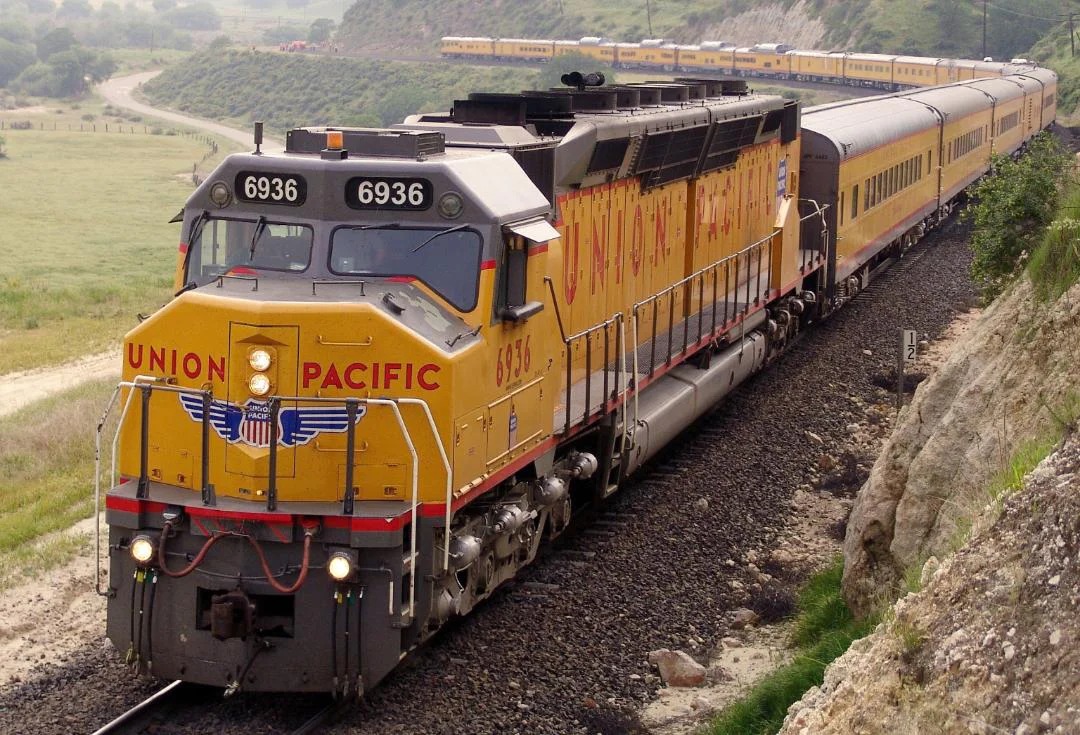
As Trains.com writes, in 1968, Union Pacific purchased 50 EMD SD45s for high-speed freight service. This was a part of a greater inquiry for more power that the railroad had launched in the previous year. These locomotives featured EMD 20-645E3 211.4-liter V20 prime movers good for 3,600 HP. However, despite the might of these six-axle brutes, Union Pacific wanted even more power. Thus, just like it did in the past, Union Pacific turned to having a special, ridiculously powerful locomotive built. More specifically, Union Pacific wanted to build the most powerful diesel-electric locomotive on the market.
As the train history site Utah Rails wrote, Union Pacific’s demand came at a time when GM’s EMD was looking to put some of its latest research in reliability in a new locomotive design. EMD and UP became a natural fit as their goals aligned well. It took EMD and UP around 13 months. In concept, the DDA40X wasn’t anything that EMD hadn’t done before. It had experience building locomotives with two prime movers in the DD35 and the DDA35. These two locomotives were essentially two GP35 locomotives mashed together. The DD35 was a twin prime mover cabless booster (B unit) locomotive, while the DDA35 was essentially the same locomotive, but with a cab.
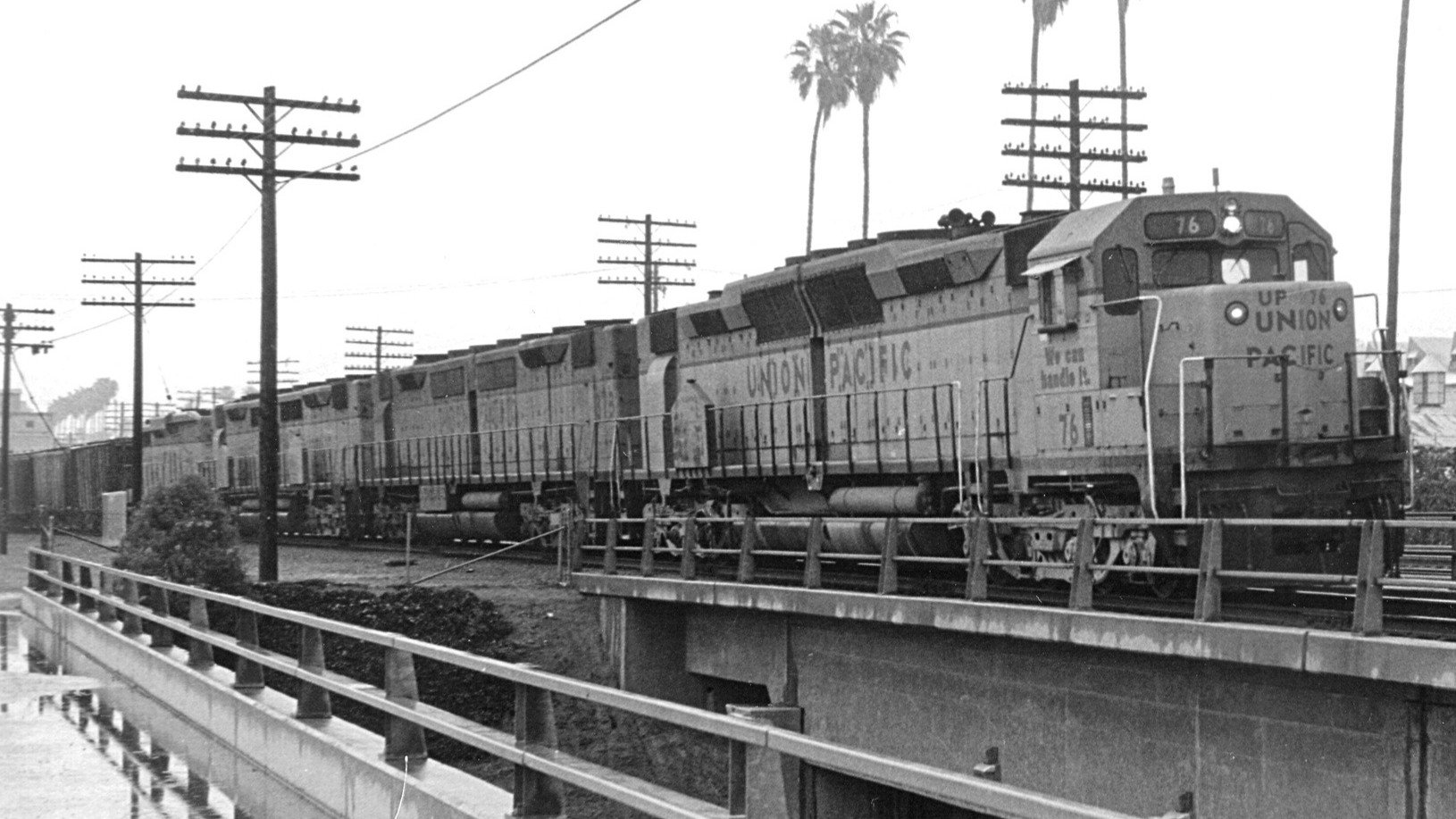
The DDA40X was more of the same that EMD had already done, but more powerful and with experimental features. Reportedly, that’s where the ‘X’ in the DDA40X name comes from. The first DDA40X was completed in April 1969. The first DDA40X, UP 6900, was delivered on time for the centenary celebration of the first transcontinental railroad’s completion. The DDA40X has earned the nickname “Centennial” because of this. Utah Rails explains the experimental technology:
In a September 1969 speech before the annual meeting of the Locomotive Maintenance Officers Association, David S. Neuhart, UP’s top mechanical officer (Title: Superintendent of Motive Power and Machinery) counted off 14 points of design improvements. First on the list was self-loading, a new feature first applied to the Centennials that allowed maintenance forces anywhere, with the flip of a single switch, to load check a unit without the need of a trackside load box. This feature was later used in January 1972 with EMD’s new Dash 2 line, and is a feature that remains part of every design from EMD since then.
Another feature that found its way into the Dash 2 line following a test on the Centennials, was the modularized control circuits, which made troubleshooting considerably easier. Other list items included improved electrical control, improved mechanical features, an integral frame and 8230-gallon fuel tank, stronger pilot design, heated windshields, unitized air brake components, and a hand brake located in the cab interior.
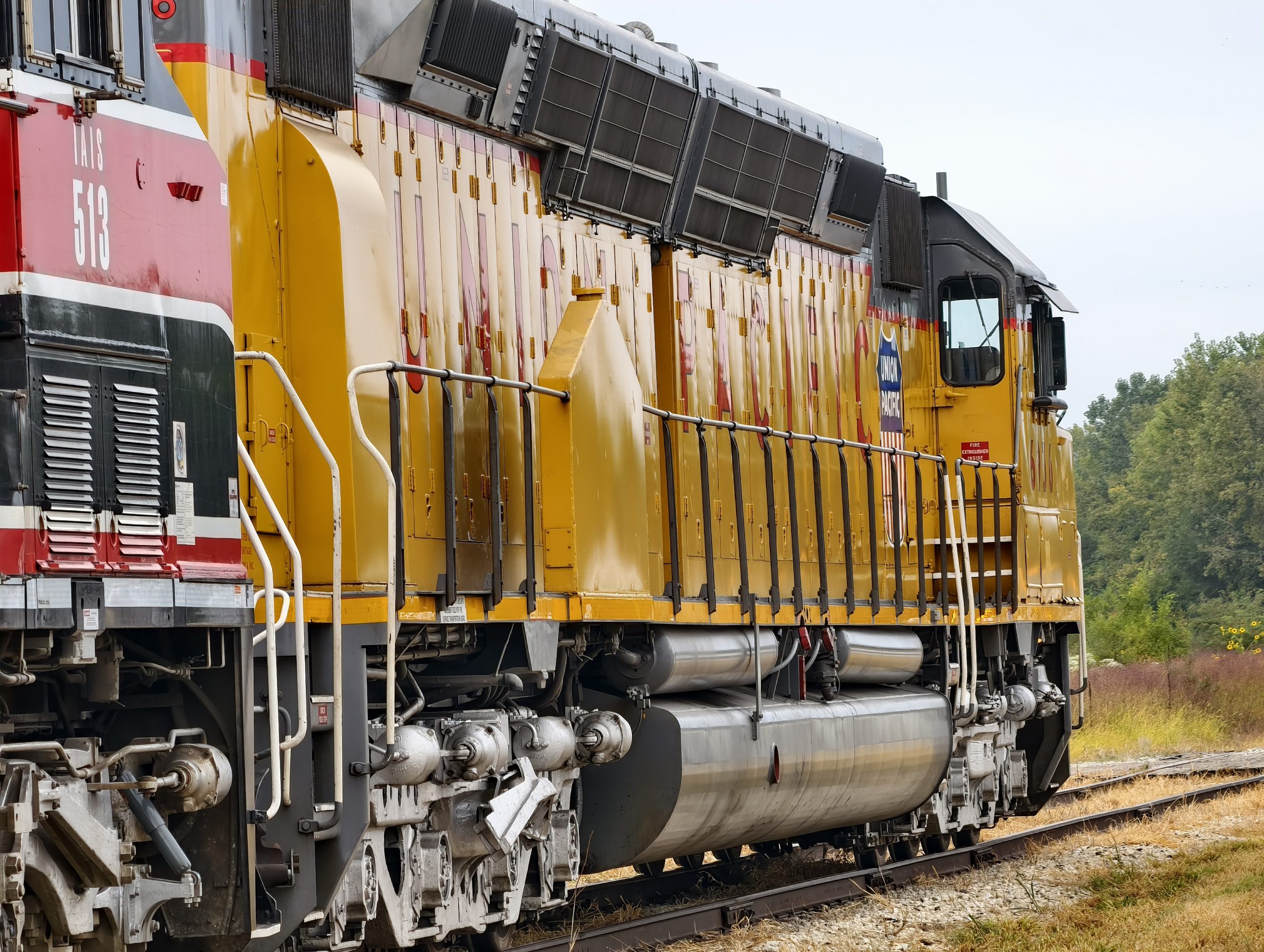
Locomotive historians Jerry Moyers and Jim Boyd further describe UP’s Centennial locomotive: “The unit was to pack two 16-cylinder 645E3A engines driving alternators for 6600 h.p. (marking the first horsepower increase for the basic 645) within a 98′-5″ carbody in hood unit configuration, but sporting a wide cowl nose similar to the FP45. Weighing in at 270 tons, the DDA40X was labeled as ‘The World’s Largest and Most powerful Diesel Electric Locomotive’.” All of the Centennial units were equipped to operate at 90 miles per hour, using EMD’s standard high speed 59:18 gear ratio. They were also classified as having pilot snow plows, although the definition was a bit loosely applied; the units only had angled, vertical pilot plates, and were not equipped with formal snowplows, such as many of UP’s other road units.
All of this is great, but what the Centennials were known best for was the fact that they were the world’s largest and most powerful single-frame diesel-electric locomotives. Power came from two 169.6-liter EMD 16-645 V16 prime movers that were good for a combined 6,600 HP. Those engines, which drink from a comically large 8,200-gallon tank of diesel, provide enough juice to power eight powered axles. These beasts, which stretch out 98 feet and 5 inches long, put down 113,940 pounds of starting tractive effort, and 103,000 pounds of continuous tractive effort.



What’s so cool about the DDA40X is that, just like EMD’s other twin prime mover locomotives, these locomotives were pretty much just two locomotives mated into one. The prime movers don’t even share the same engine rooms or the same alternators.
Union Pacific seemed to love these locomotives, too. It had 47 copies built, and these trains thundered about the railroad’s tracks, often paired in trainsets with 16,000 total horsepower or more on deck. Finally, UP got the one locomotive to rule them all, right?
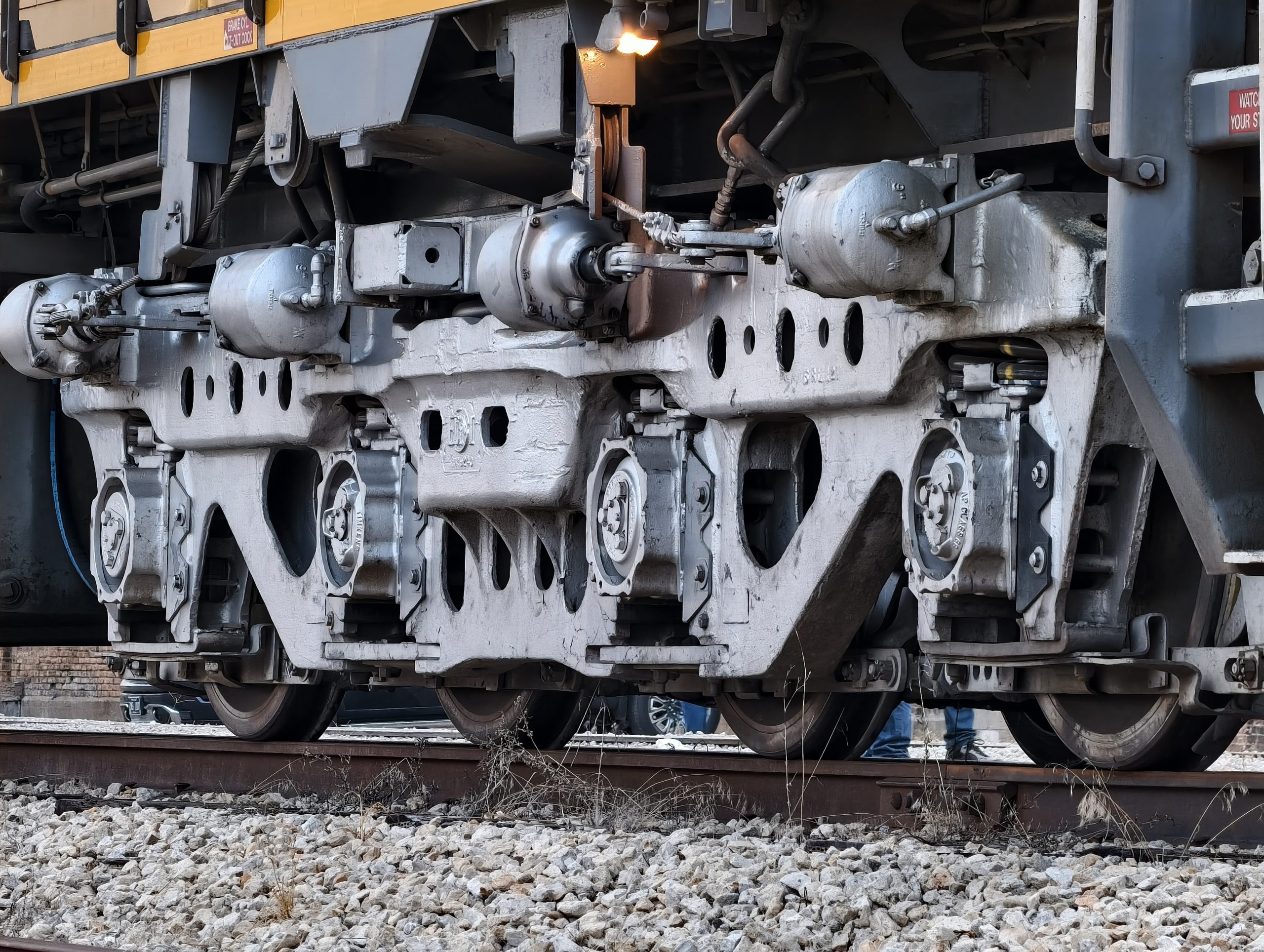

Well, it did seem that way, as Union Pacific made the DDA40Xs work so hard that they had each racked up a million miles by the mid-1970s. Unfortunately, the realities and the economic struggles of the 1970s eventually caught up to the mighty Centennials, and they became too expensive to fuel and maintain. By 1980, all examples were put into storage.
By 1984, Trains.com writes, an uptick in business and a locomotive shortage made UP press 25 Centennials back into service. The others were stripped for parts to keep the other 25 running. These locomotives managed to run only for another year before being stored again. The last ever scheduled DDA40X run was on May 5. That’s when DDA40X No. 6936 and SD40-2 No. 3680 ran a train from Los Angeles to Chicago. After this, UP would just go back to using typical locomotives, but lashed up to add more power.

Of the 47 DDA40Xs built, two were wrecked, and most others were scrapped. Only 13 examples survive, of which only one, No. 6936, is in operational order. That was largely because the locomotive was a member of Union Pacific’s heritage fleet. In 2022, Union Pacific donated the locomotive, as well as a bunch of passenger cars and two steam locomotives, to Railroading Heritage of Midwest America. That brings us to where we are today.
The Quad Cities Rocket
The Quad Cities Rocket excursion trains were more than just a fun experience for railfans. RRHMA wants to restore a pair of Chinese-built 2-10-2 steam locomotives as well as promote nonprofit rail safety organizations like Operation Lifesaver.

The Quad Cities Rocket was brilliant for this purpose. Here’s what RRHMA said:
Step aboard a rare piece of living history as you ride in classic vintage streamliner coaches powered by the world’s largest diesel locomotive, Union Pacific DDA40X #6936 on a scenic rail adventure across the heartland. Railroading Heritage of Midwest America (RRHMA) in conjunction with the Iowa Interstate Railroad is proud to present RRHMA-Silvis’s first organization fundraiser trip, “The Quad Cities Rocket.” Funds from this trip will benefit local nonprofits such as Central States Steam Preservation Association, and Operation Lifesaver, Inc.
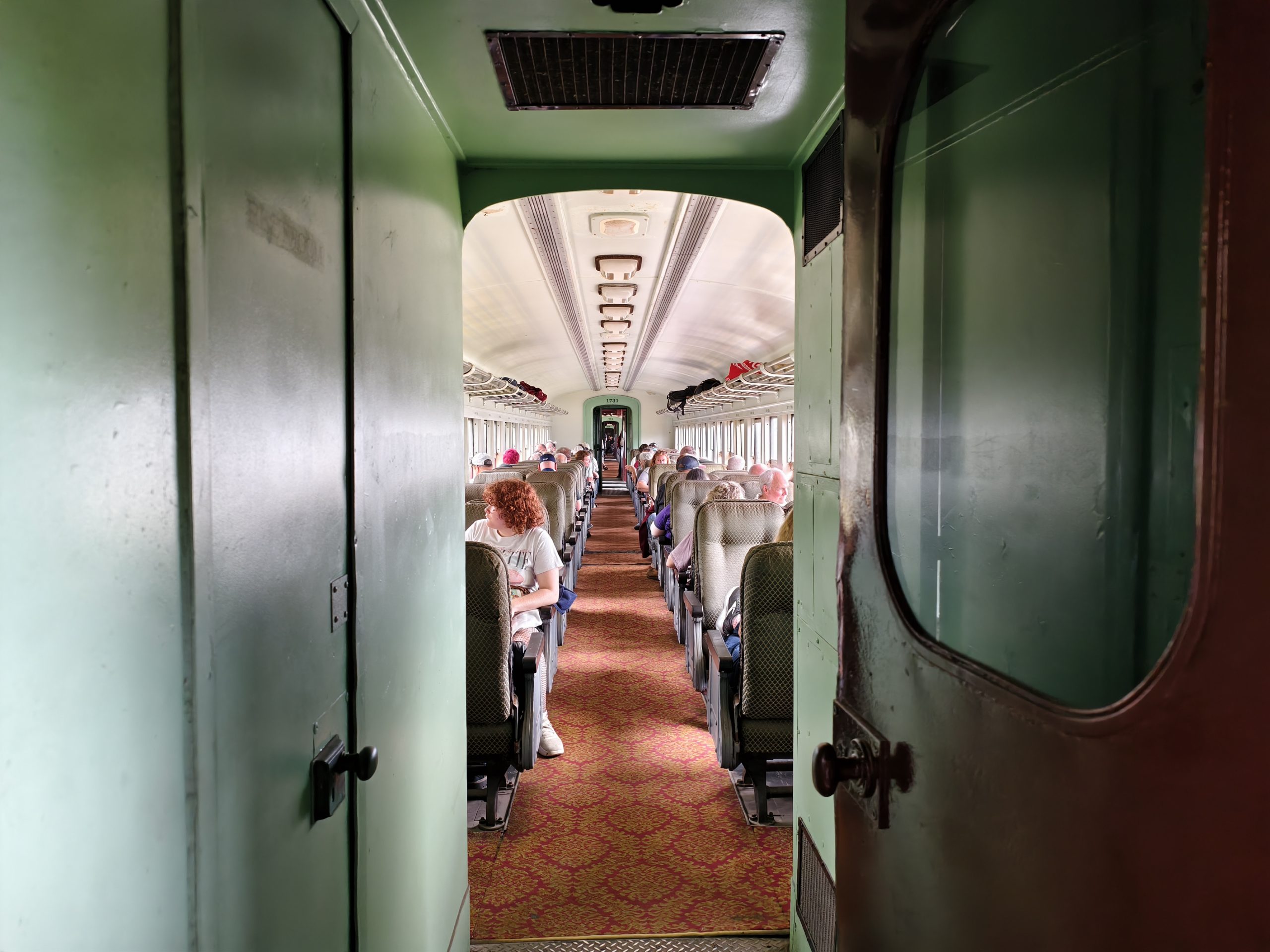
The excursion trains were broken up into two trips: The City of Wilton on Saturday, and The City of Bureau Junction on Sunday. As a fan of the Quad Cities – Moline, East Moline, and Rock Island, IL; Davenport, IA, and Bettendorf, IA – and a huge fan of the Mississippi River, that was an easy pick for me. Before you comment, yes, the Quad Cities area technically includes five cities in the modern day. The City of Wilton excursion traced the historic Rock Island Line across the Mississippi and into Iowa. The City of Bureau Junction excursion followed the Rock Island mainline deeper into Illinois.
Tickets for the train were $139 per person for Streamliner coaches and $129 per person for P70 coaches. It was cool enough that the DDA40X locomotive was a real piece of history, but this equipment was something else. The Streamliner coaches were a mix of cars. The named business cars were built in the 1910s by Pullman. Then there was a quartet of coach cars that were built in the 1950s. RRHMA says that these cars were restored to their 1950s appearance and were fully functional, including bathrooms and air conditioning.

Tickets for these cars, which had seating for only 44 people per car, sold out almost immediately. Sadly, I was not able to get an image of their interiors. However, the cars that I had access to were arguably even cooler. The Iowa Interstate Railroad brought a set of ‘P70’ coach cars that were used on the Pennsylvania Railroad nearly a century ago.
These all-steel heavyweight coaches were built by Altoona and other coach builders between 1907 and 1929. I’m told that the P70 coaches in Iowa Interstate’s possession come from the latter half of the 1920s, which makes them close to 100 years old! Apparently, the Railroad Development Corporation acquired these coaches in 2016 from the Austin Steam Train Association in Texas. The coaches were rebuilt after World War II, and during the rebuild, the coaches got a new seating configuration, relocated bathrooms, and roofs modified to have fewer leaks. Iowa Interstate also performed some work on the coaches, including fresh paint.
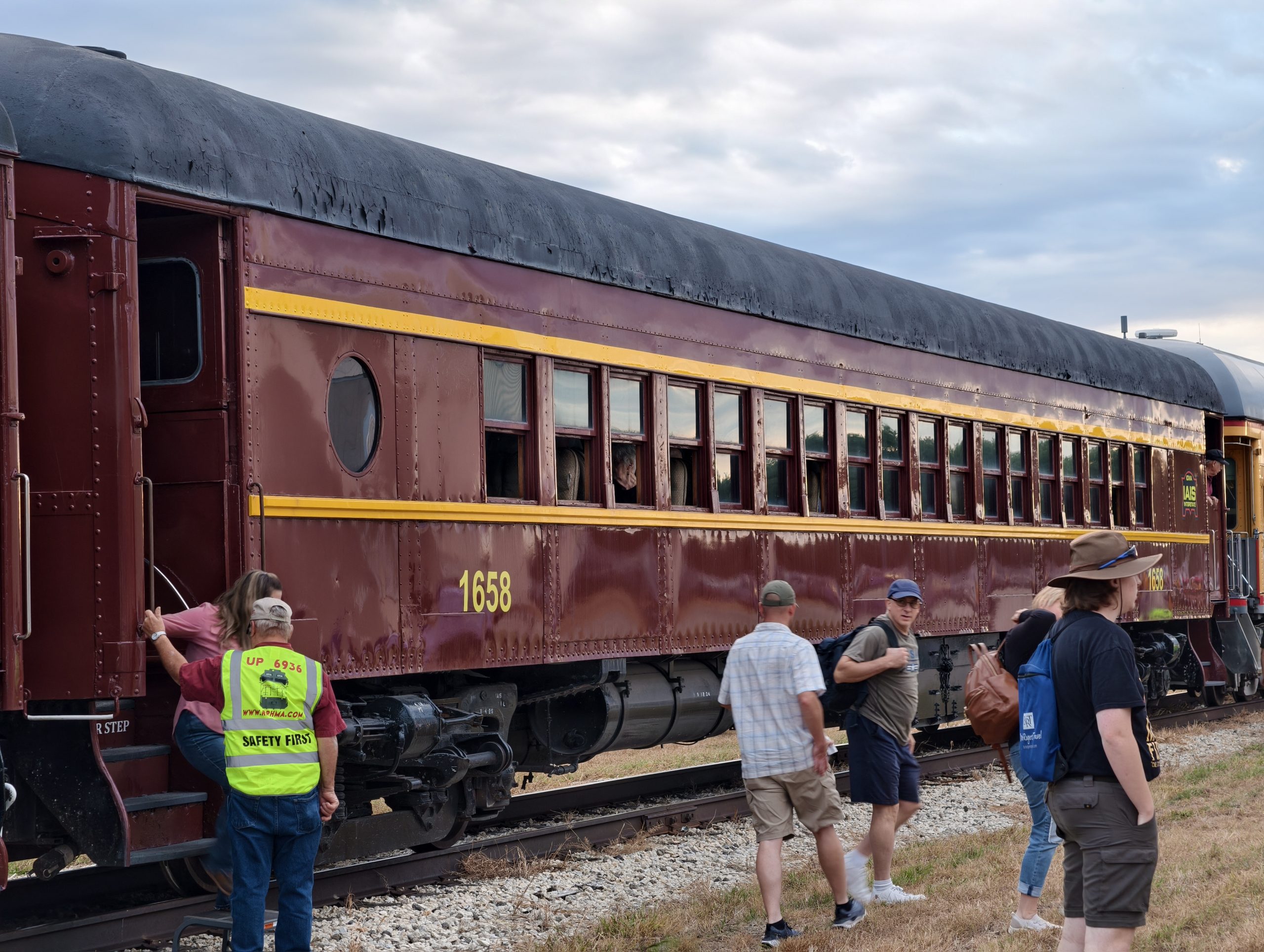
These cars are 80 feet long, with 70 feet of the length being used for passenger volume. These coaches have 72 seats, and if fitting 72 seats into 70 feet sounds like a cramped experience, that’s because it is. The car that I sat in, No. 1699, was configured to have the seats all facing each other. This meant getting really friendly with the legs of your across-seat neighbors. Hopefully, Spirit Airlines doesn’t catch wind of this.
Despite the cramped space, these coaches were awesome. They featured fully functional bathrooms, and one vintage car had been converted into a merch store and a mobile kitchen. This wasn’t my first time experiencing a vintage heavyweight coach — the Illinois Railway Museum runs some every weekend — but unlike a museum demonstration train’s cars, these cars were fully functional, even several decades after they were last in revenue service.

These P70s didn’t have air-conditioners, either. So, most of the cars had their windows open, and everyone got to experience what riding a train was like so long ago.
Sheryl and I boarded the train at around 9:20 a.m. Saturday morning, and the train was supposed to leave 10 minutes later, but it ended up getting delayed by about 45 minutes as two freight trains entered the yard where RRHMA had the train parked. Some folks, myself included, joked that this excursion train was giving us the Amtrak experience of waiting while freight trains had the right of way.

In defense of the freight trains, it wasn’t like we could move. When the excursion train finally departed Silvis and slowly meandered its way through a Moline that had only started its day, we spent most of our time on a right-of-way with only a single track.
Those early moments of the train ride were magical. I got out of my seat and stood in the vestibules at the ends of the P70 cars. Outside, the denizens of Moline lined up at grade crossings to take pictures and wave at the train. I had thought that only railfans cared about this train, yet everyone of all walks of life was busting out their cameras.
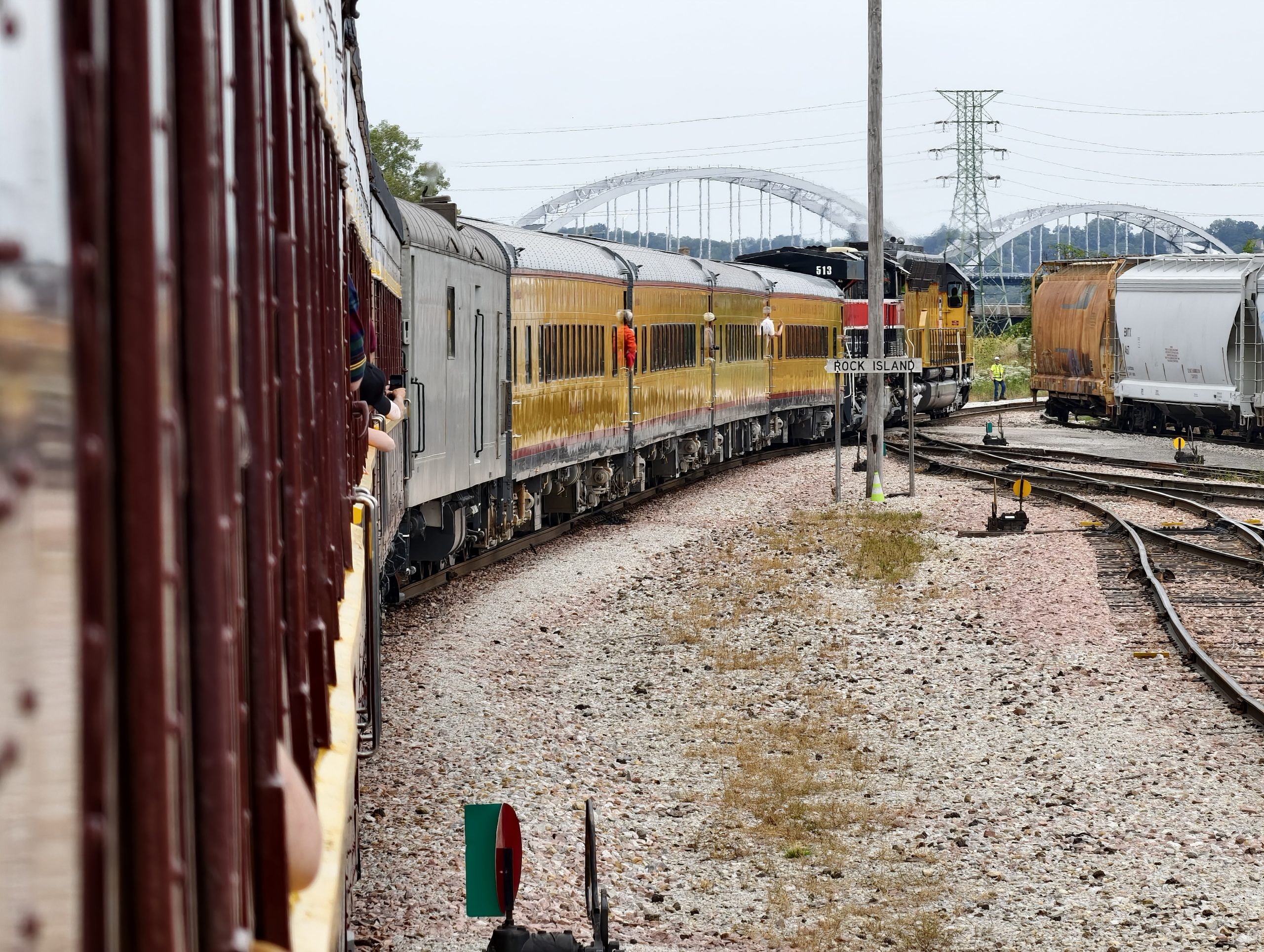
I also learned that the people on this train were interesting. One man that I talked to told me he was not from Illinois or Iowa, but California. He had flown to Florida to ride one excursion train, then flew to Illinois to ride this one. This was his hobby!
Slow Ride
The ride through Moline was slow, with the train barely attaining double-digit speed. This was great. On one side of the train was the mighty Mississippi, and on the other side were the vintage cityscapes of Moline. Eventually, the scenery changed, opening up to the epic double-decker Arsenal bridge, river locks, and Davenport, Iowa, on the far end.

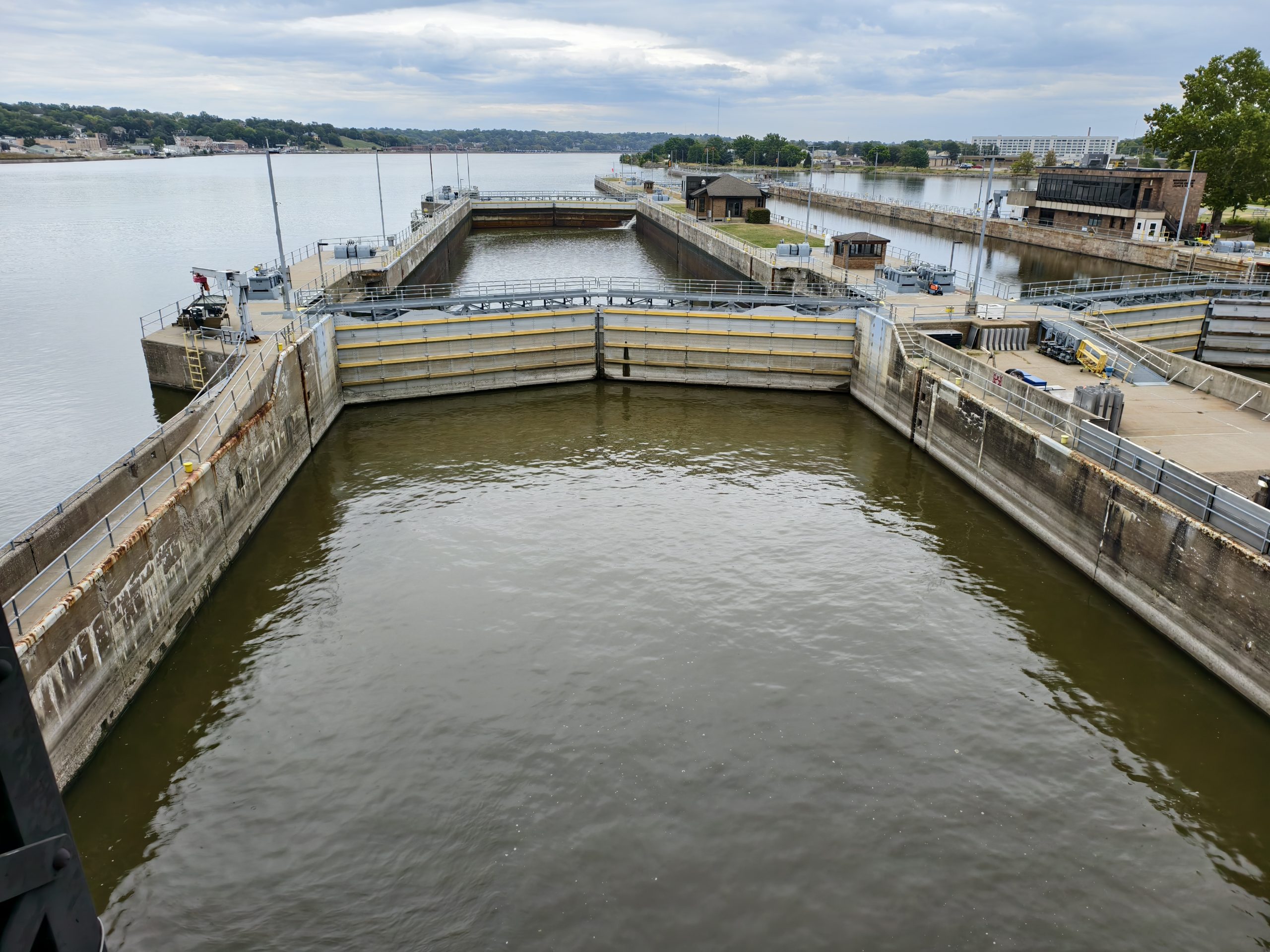

From there, we cruised through the downtown area of Davenport, bound westward for Wilton, and eventually to South Amana. What I found shocking was that the groups only got larger as the train rolled down the tracks. There were photographers on the rooftops in Davenport and even people with tripods hanging out of their apartment windows. I suppose it’s not often that you see what’s more or less a double locomotive pulling nearly 100-year-old cars.
Eventually, the city gave way to rural Iowa, and the DDA40X was opened up a little. Our speeds increased to 40 mph with some bursts above 50 mph. This wasn’t fast by train terms, but this was perfect and romantic. At that moment, there wasn’t much better going on in the world than sitting down in a vintage train and watching the world roll by. Weirdly, even though we were going only 40 mph, the P70s made the train feel like it was going at least 15 mph faster.

There wasn’t a whole lot to do or see. The train stayed in a mostly straight line, and, aside from a few river crossings and some small towns, the scenery was mostly farmland. But again, this was so relaxing. It was a perfect time to shut off the smartphone, ignore social media, and just take some deep breaths and slow down.
I spent much of my time standing in the vestibules, and in doing so, I learned that the train had some people who seemed intent on chasing the train for the whole excursion. Seriously, take a look at this image. Nearly all of these cars raced the train from the Iowa border to the turnaround point in South Amana.
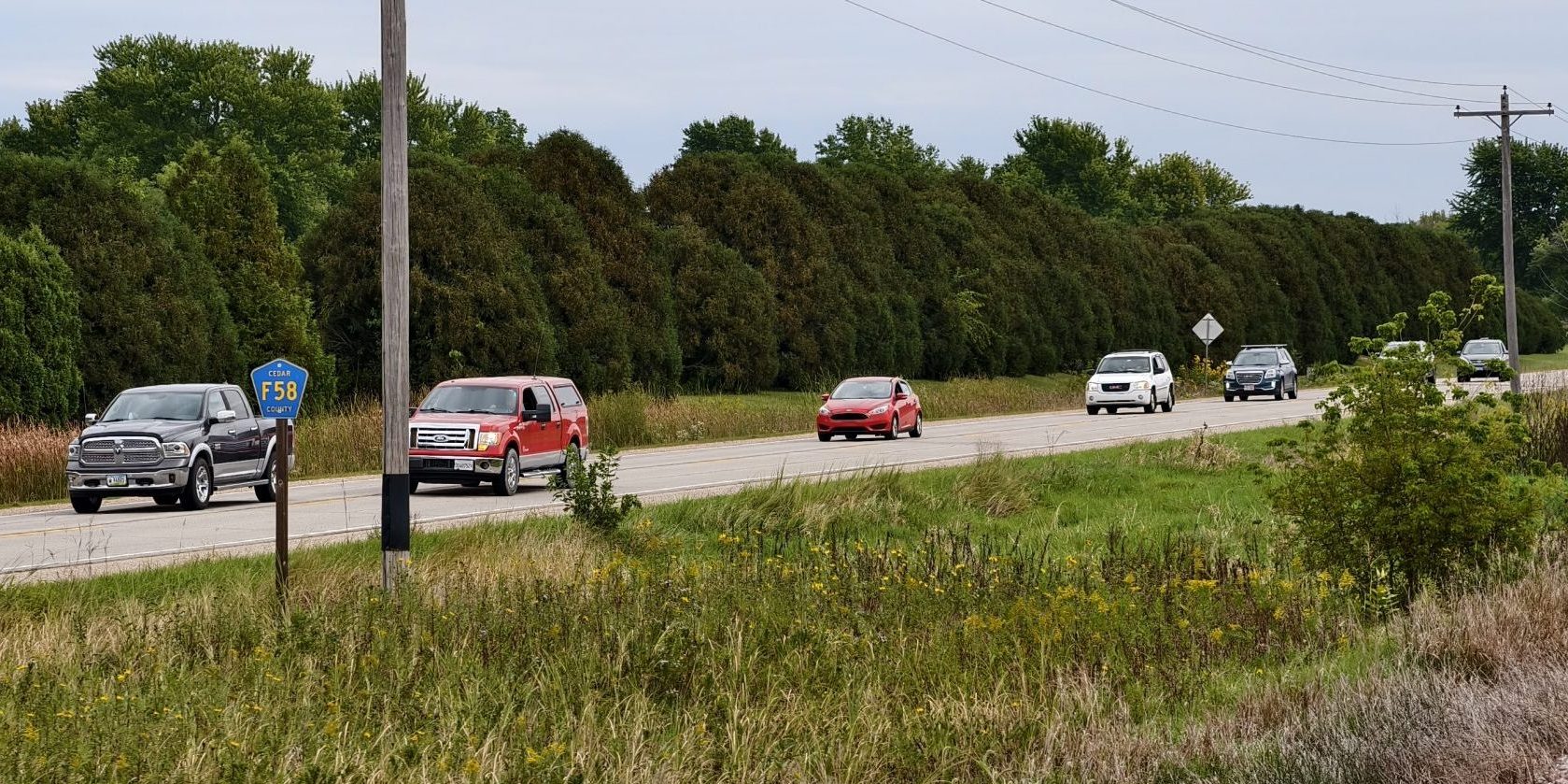
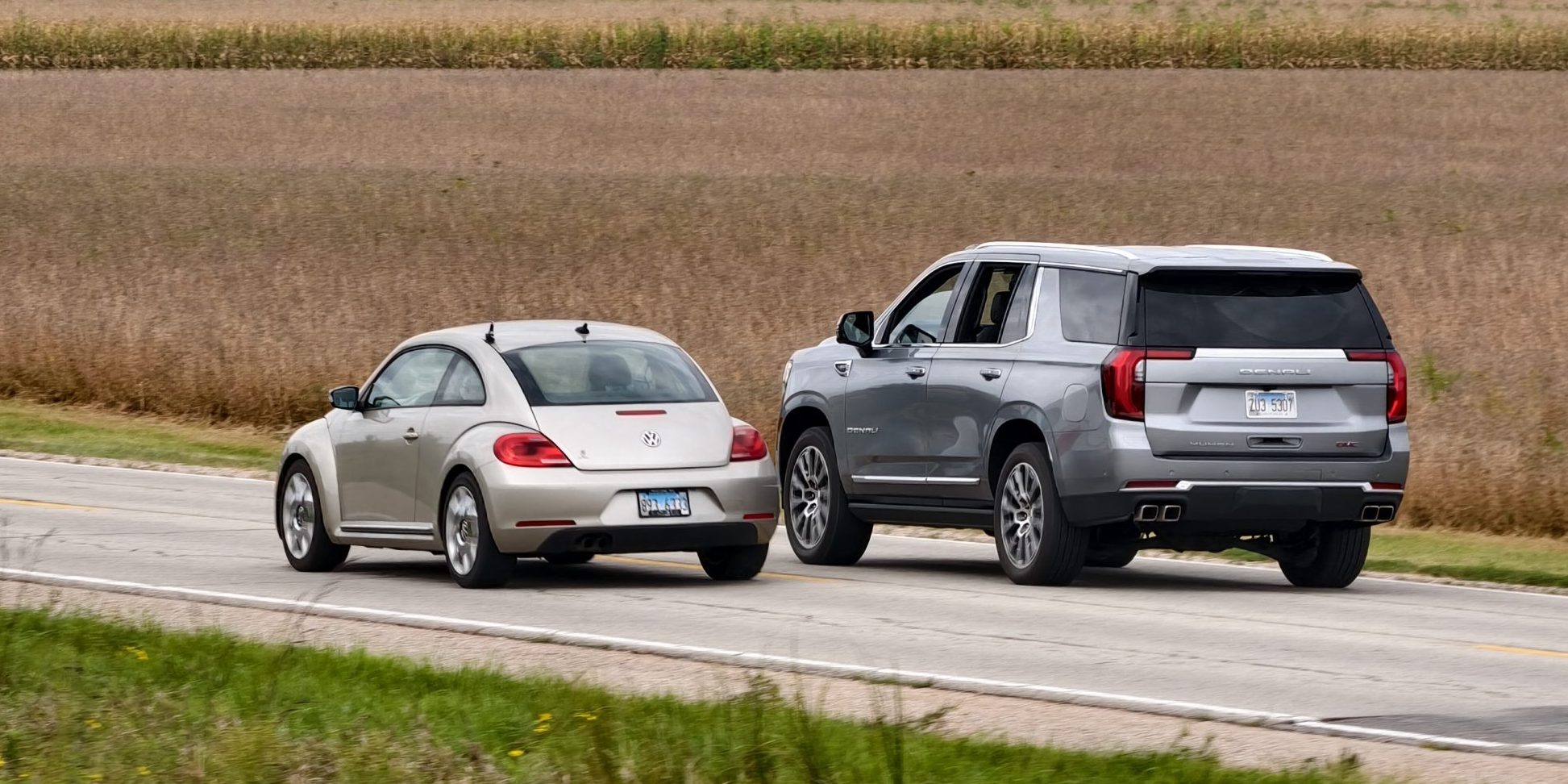
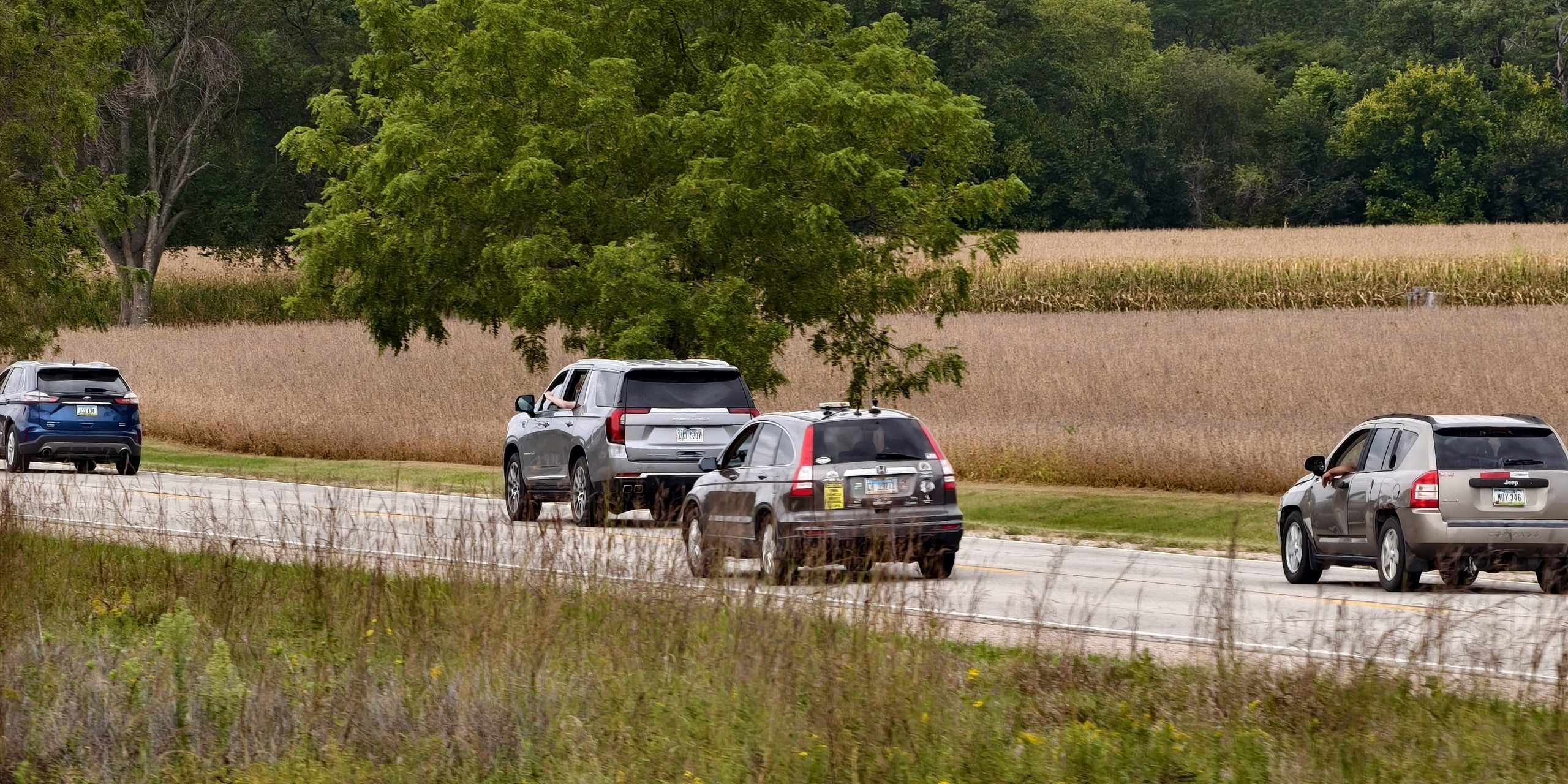
These people got rather aggressive in their missions to beat the train to the next grade crossing, and I frequently saw folks blasting past other cars on the country roads. These people would then set up a camera at the next crossing, get shots and video of the train passing, and then race the train to the next crossing. I’m serious when I say that I saw these cars following the train for the entire day.
The train reached Wilton, Iowa’s historic depot, at around 1 p.m., or about an hour late. Despite our lateness, we got a huge welcome from the locals. What was amusing was the fact that there was a classic car show going on in Wilton that day, but it seemed like more people wanted to see the train than the cars.

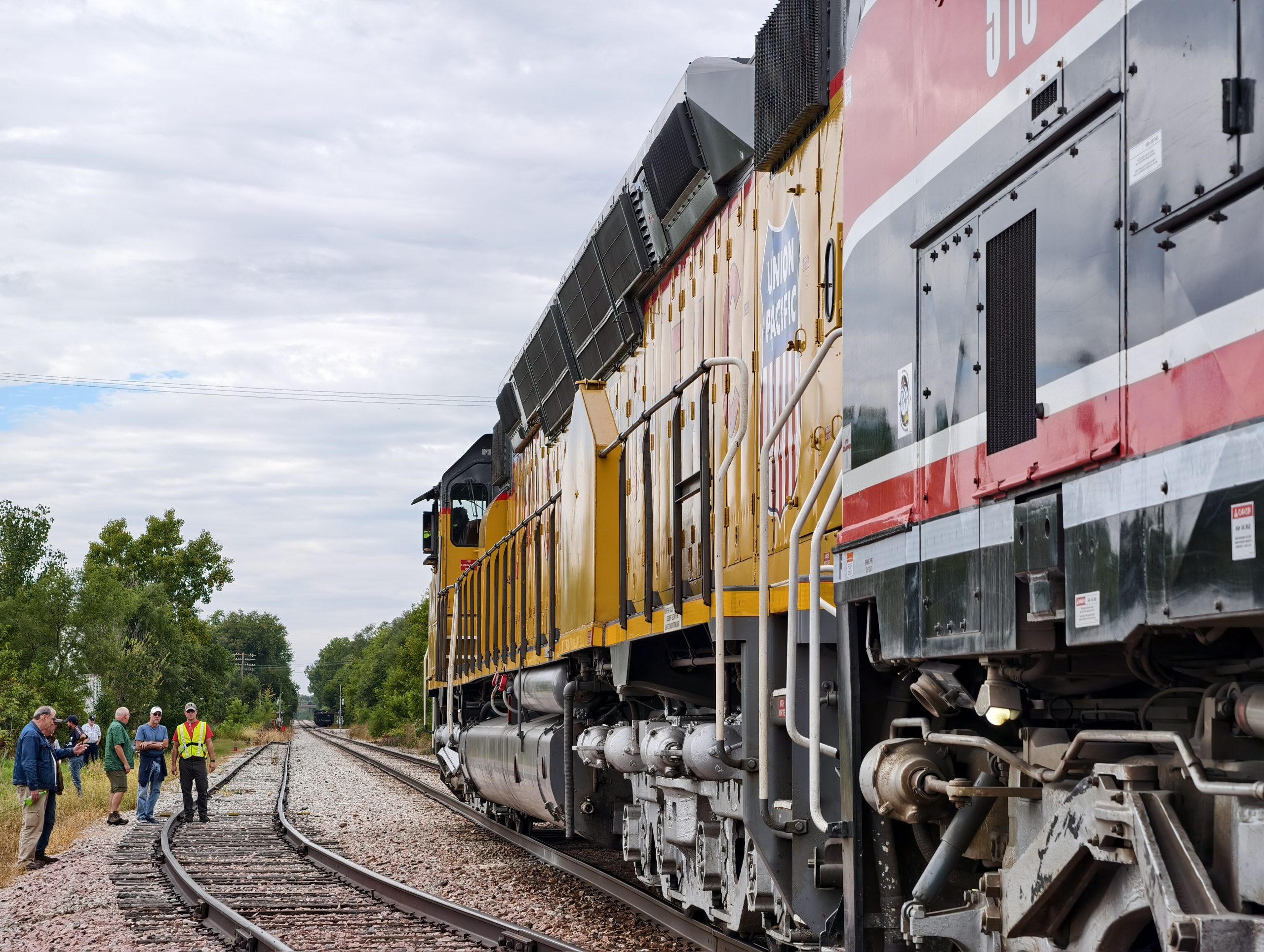
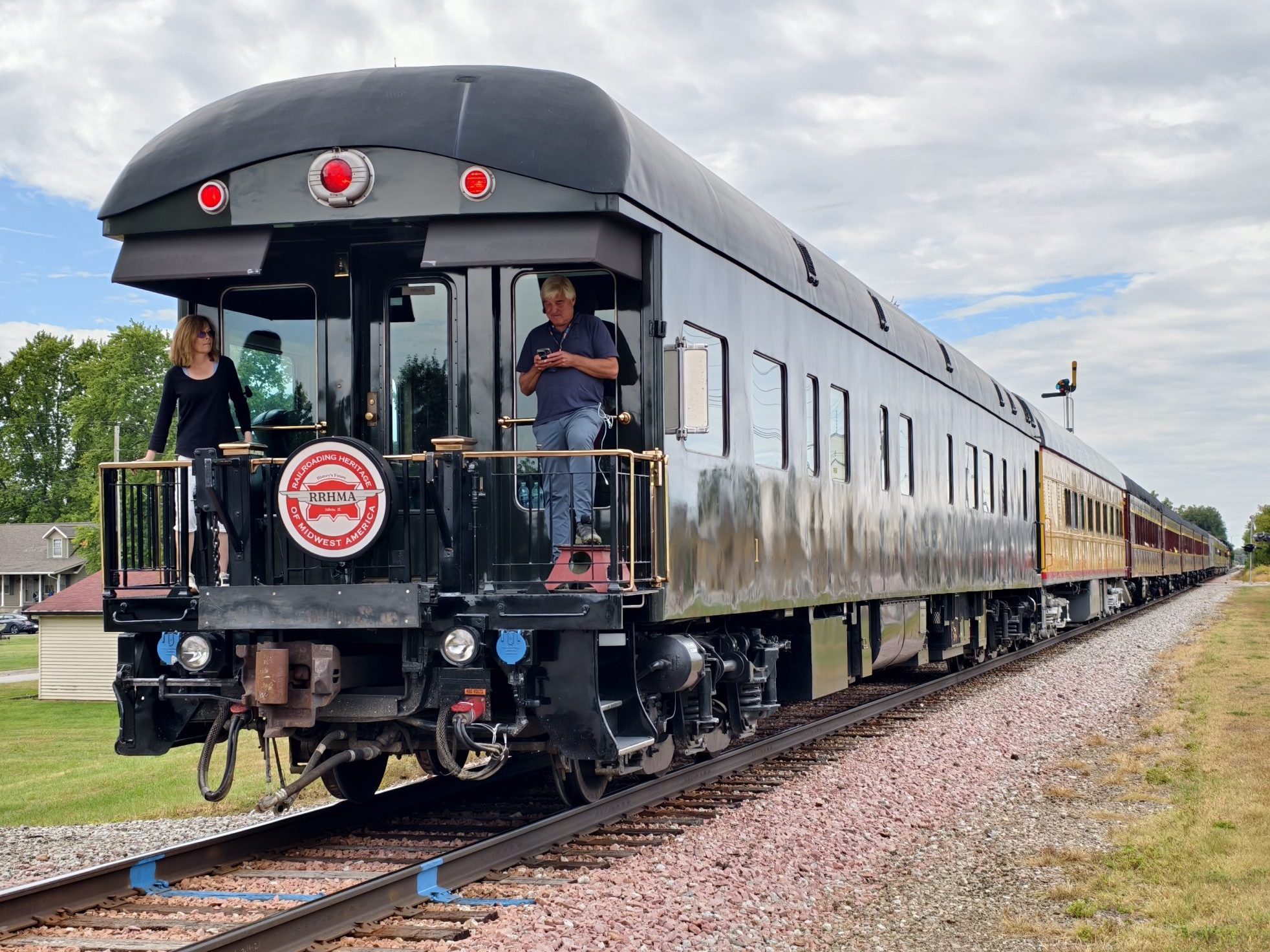
In Wilton, the train’s passengers enjoyed a submarine sandwich while they toured the depot and checked out some local businesses. Then, at exactly an hour past the stop, we boarded the train and took off for South Amana. There, that’s where the train found a wye. These wyes are pretty neat, as they don’t just allow a train to switch to a new track to speed off in a new direction, but they also allow a train to perform a three-point turn.
Here’s an illustration of how we used the wye in South Amana:

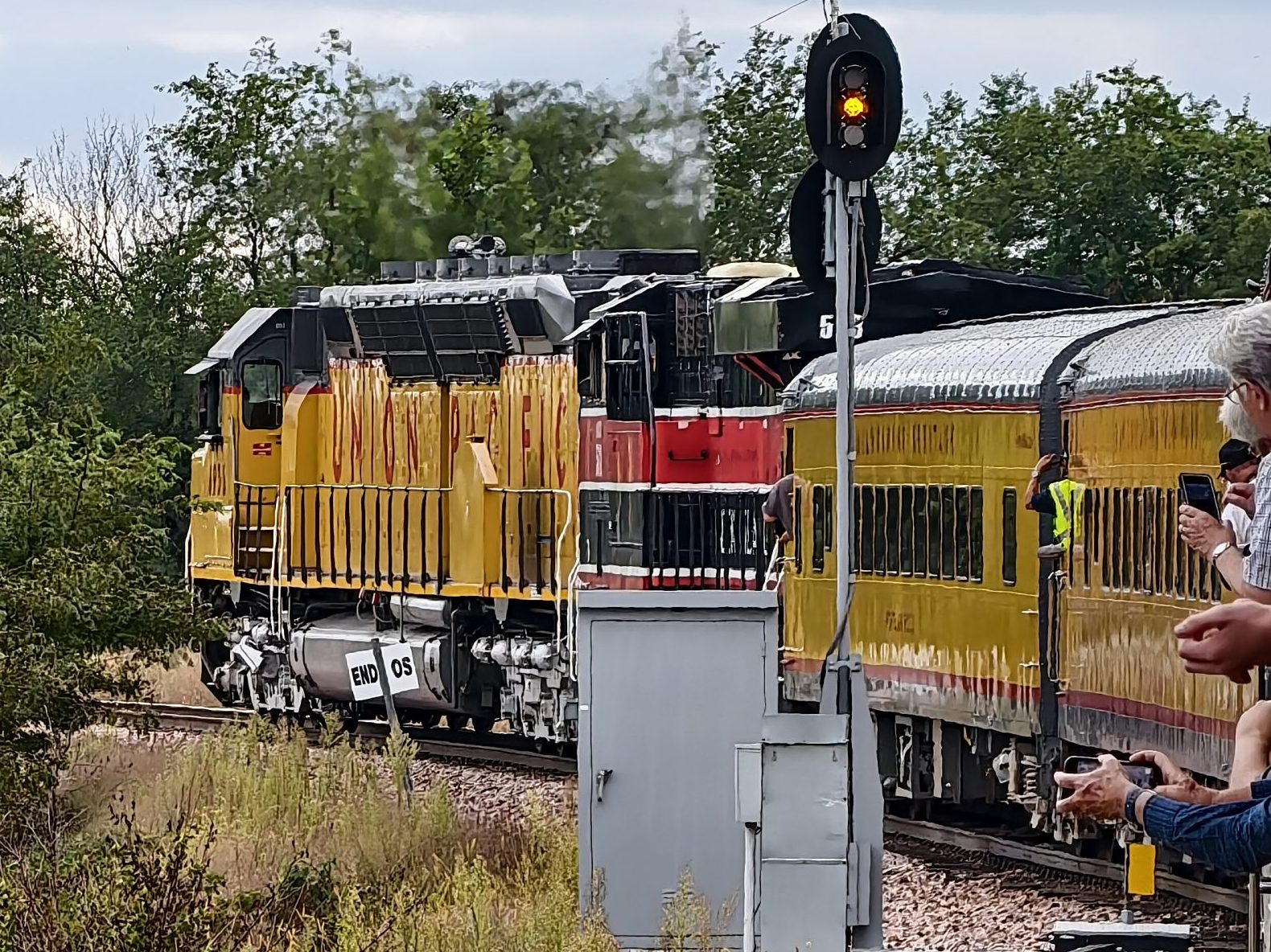

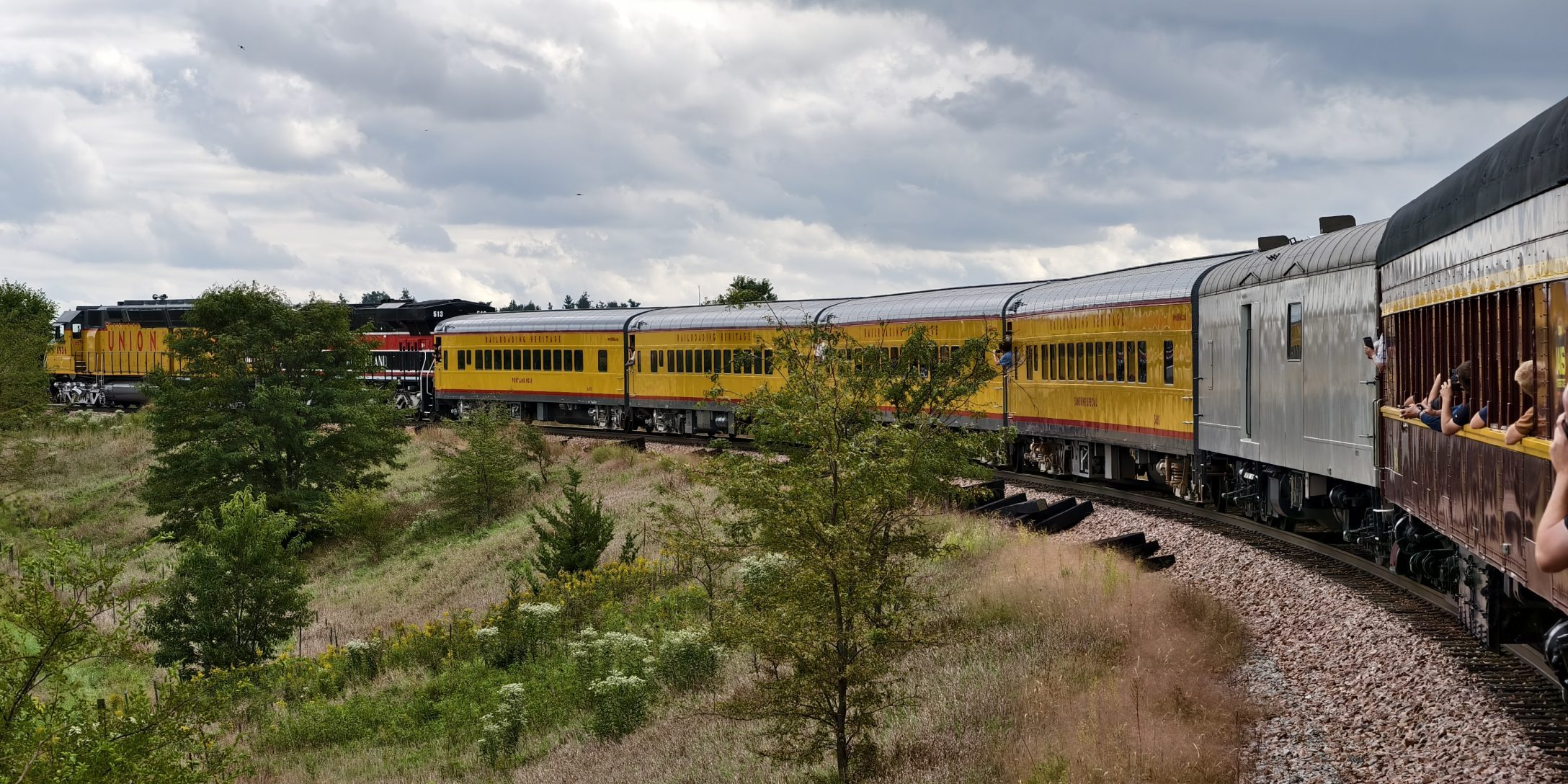
Somehow, there were even more people chasing the train during the return trip. There were crowds of people at several crossings and even a slew of people all lined up on a beach next to one of the river crossings. It had seemed as though word had gotten around that the only operational DDA40X was rolling its way through Iowa, and folks weren’t going to miss it.
The return trip featured no stops and no delays. We rode straight through from Amana to Silvis, which took around three hours and 30 minutes. I spent most of the return trip with my arm hanging out of the window and taking in the late afternoon sun and breeze.
Trains Are The Best
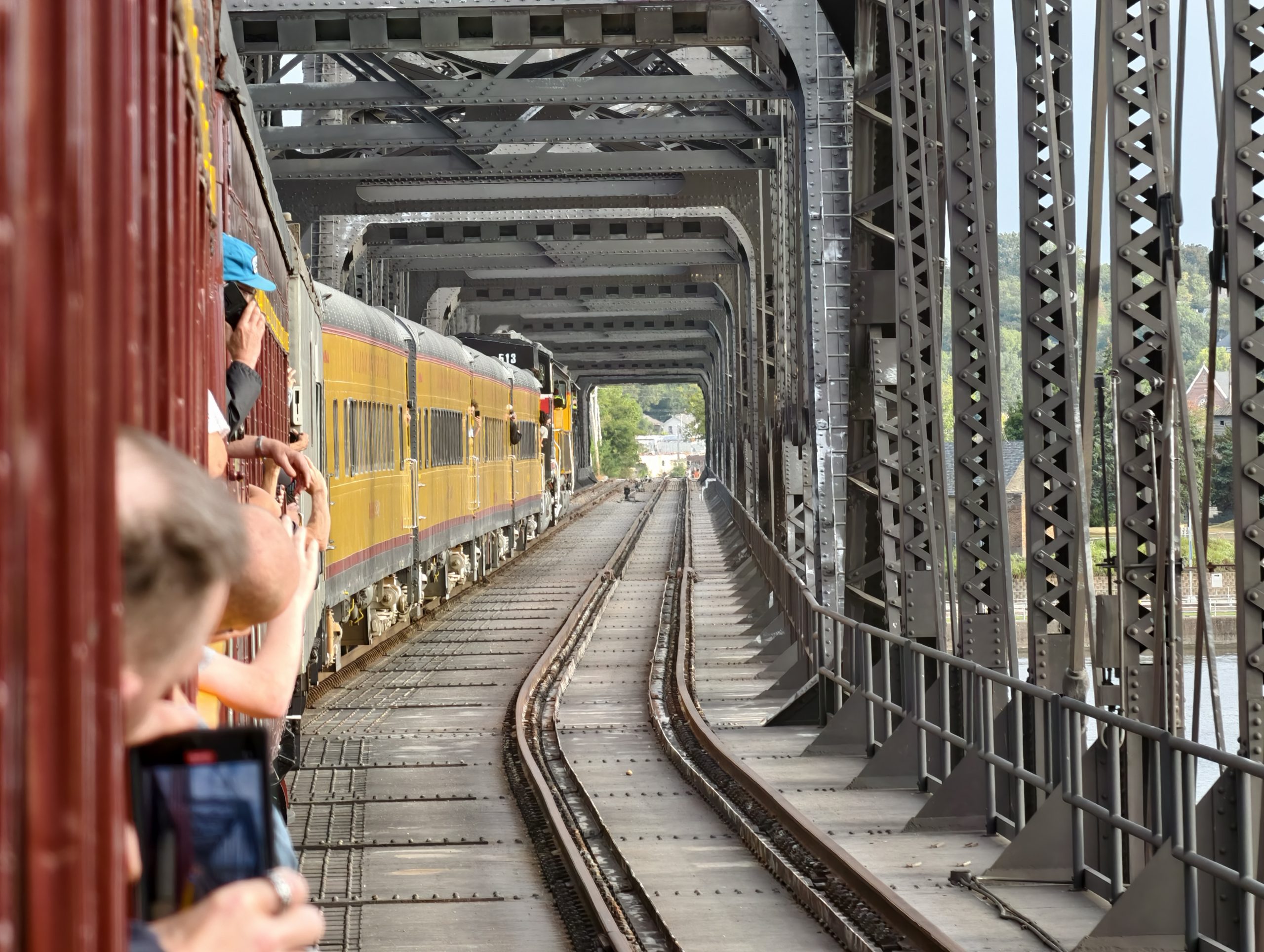
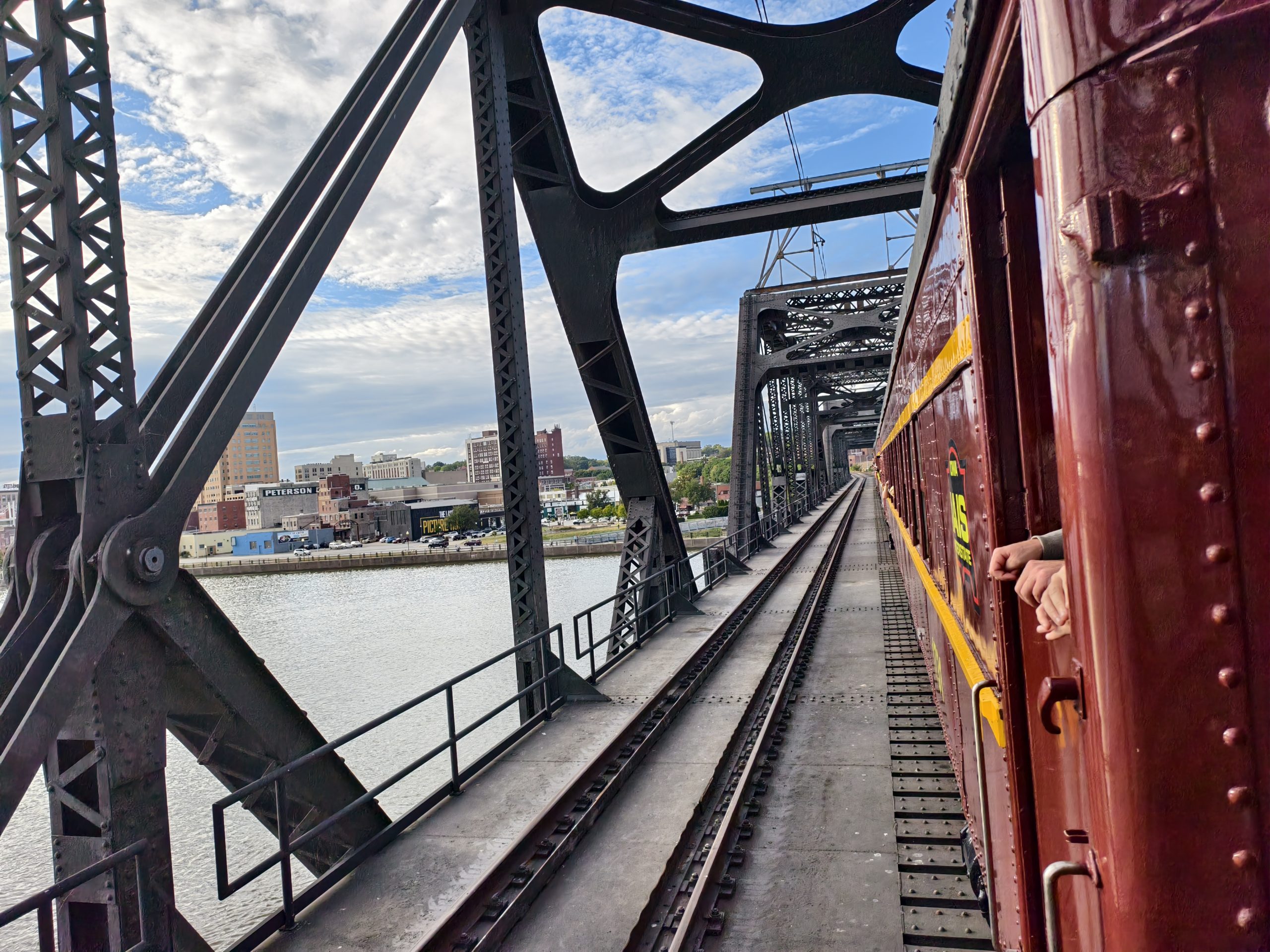
Honestly, it might have been even more romantic than the slow train that Sheryl and I took to the Grand Canyon back in 2024. I didn’t know that taking an old train through otherwise boring farmland could be so good. Everything was great, from the smells of the old cars to the clickety-clack of the train down Iowa Interstate’s old-school joined rails. I even occasionally got whiffs of diesel, and, sure, I know not everyone is into that, but it fit so well here.
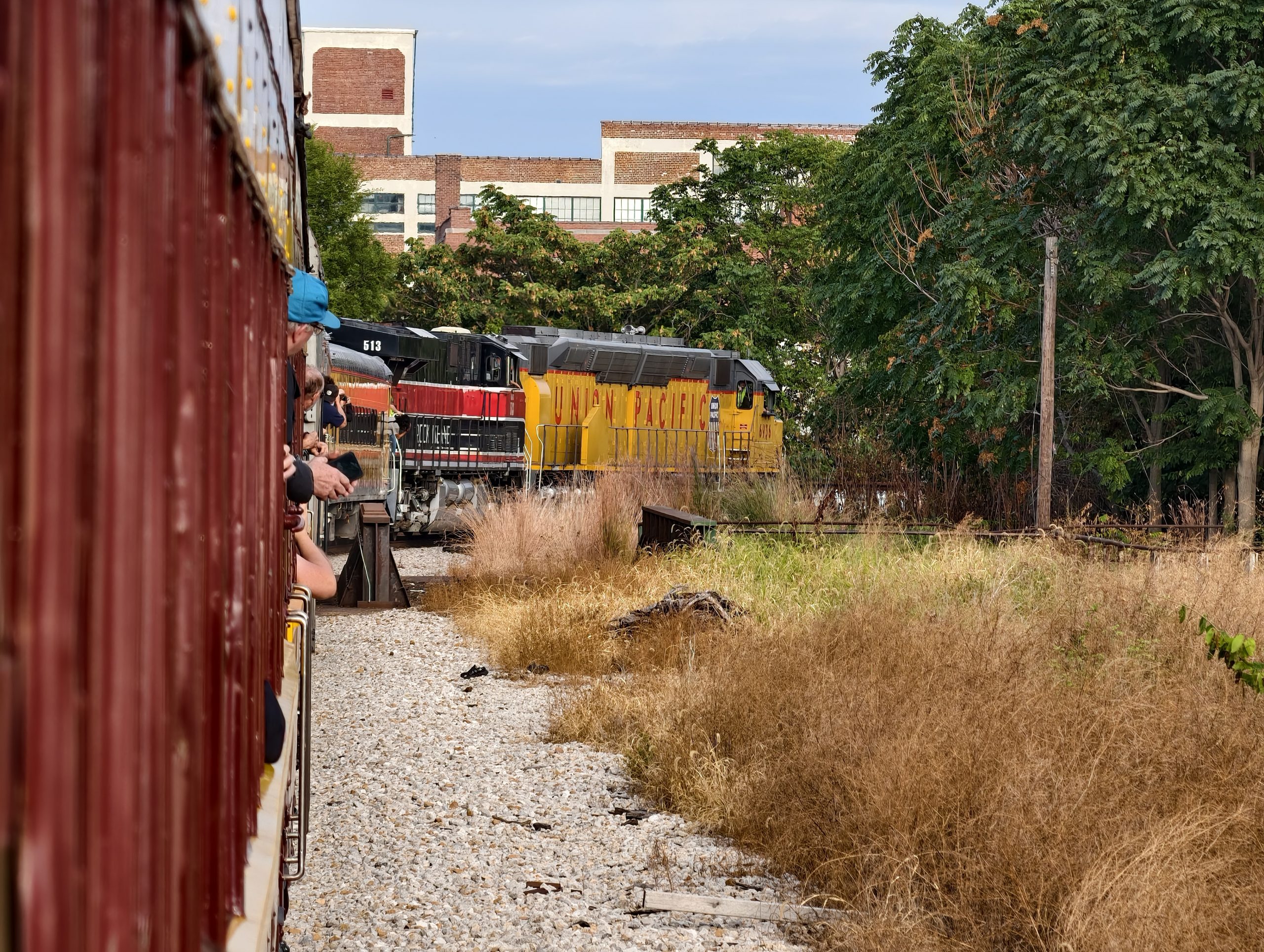
We arrived back in Silvis around 6:30 p.m., just in time to catch the train under the setting sun. The train got more or less a hero’s welcome, as crowds of people cheered it on as it rolled into the yard.
Our day was honestly full of surprises. I never expected so many people to go so crazy for a diesel-electric locomotive. I never expected so see that hundreds of people paid to ride an excursion train to nowhere. I never expected to enjoy riding a train to nowhere as much as I did. Yet, here we are. One thing is for sure, I won’t be forgetting this one.

Sadly, if you’re looking to get a ride behind the one and only operational DDA40X, I have no idea when RRHMA plans on running it next. But one day, you may have more than just one option, as the Illinois Railway Museum has also committed to restoring its DDA40X to running condition.
If you’re interested in taking an excursion train, look up what railroad historical societies are in your area and if they run any old trains. It sounds silly to take a train to the middle of nowhere, but it’s totally worth it. You never know, maybe you’ll be lucky enough to ride behind the largest, most powerful diesel-electric locomotive that’s still in operation.
If you are a train chaser and live in northern Illinois, I would love to see a train from your point of view! Send me an email at mercedes@theautopian.com.
Here are some more photos before you go!
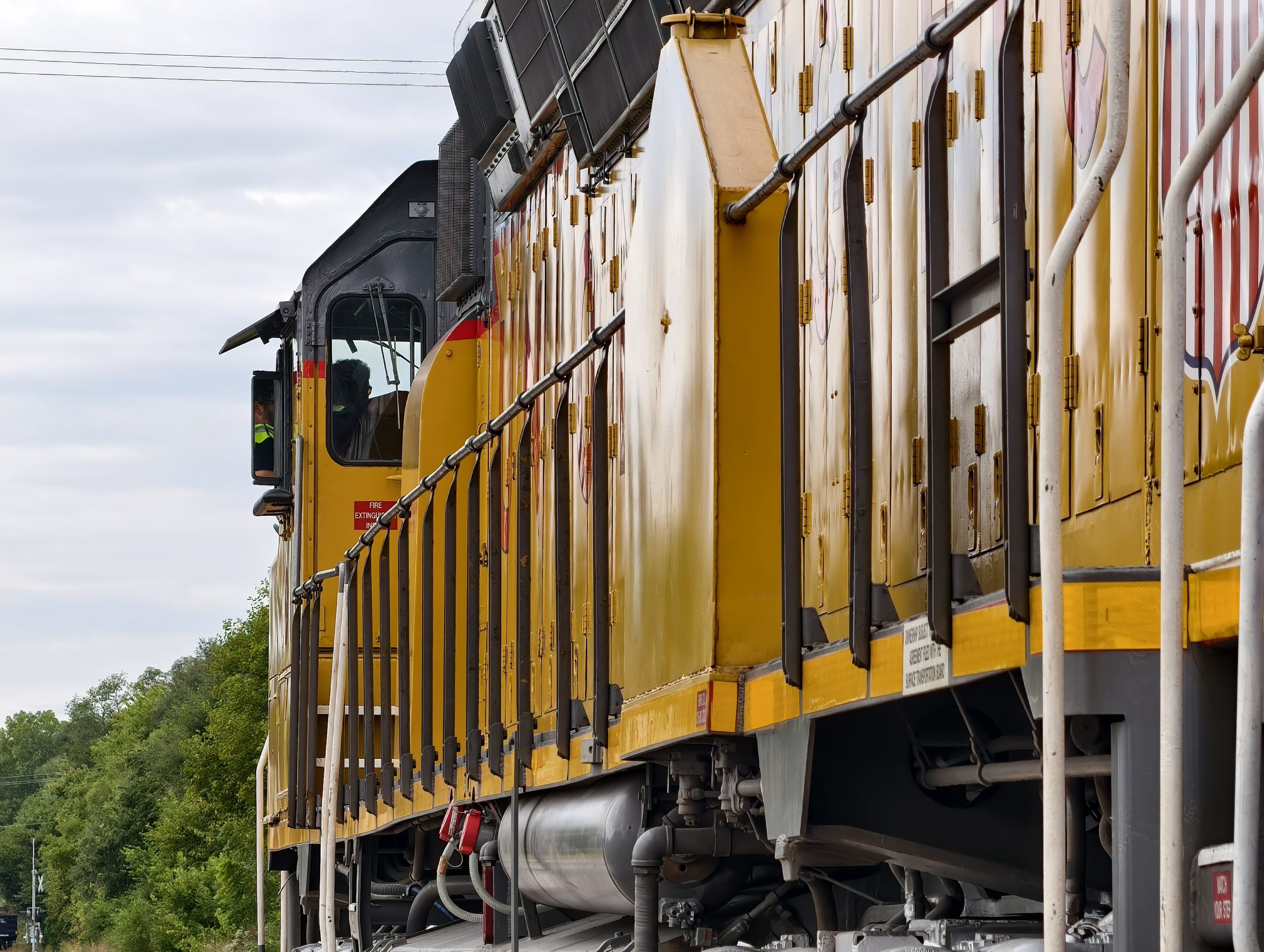
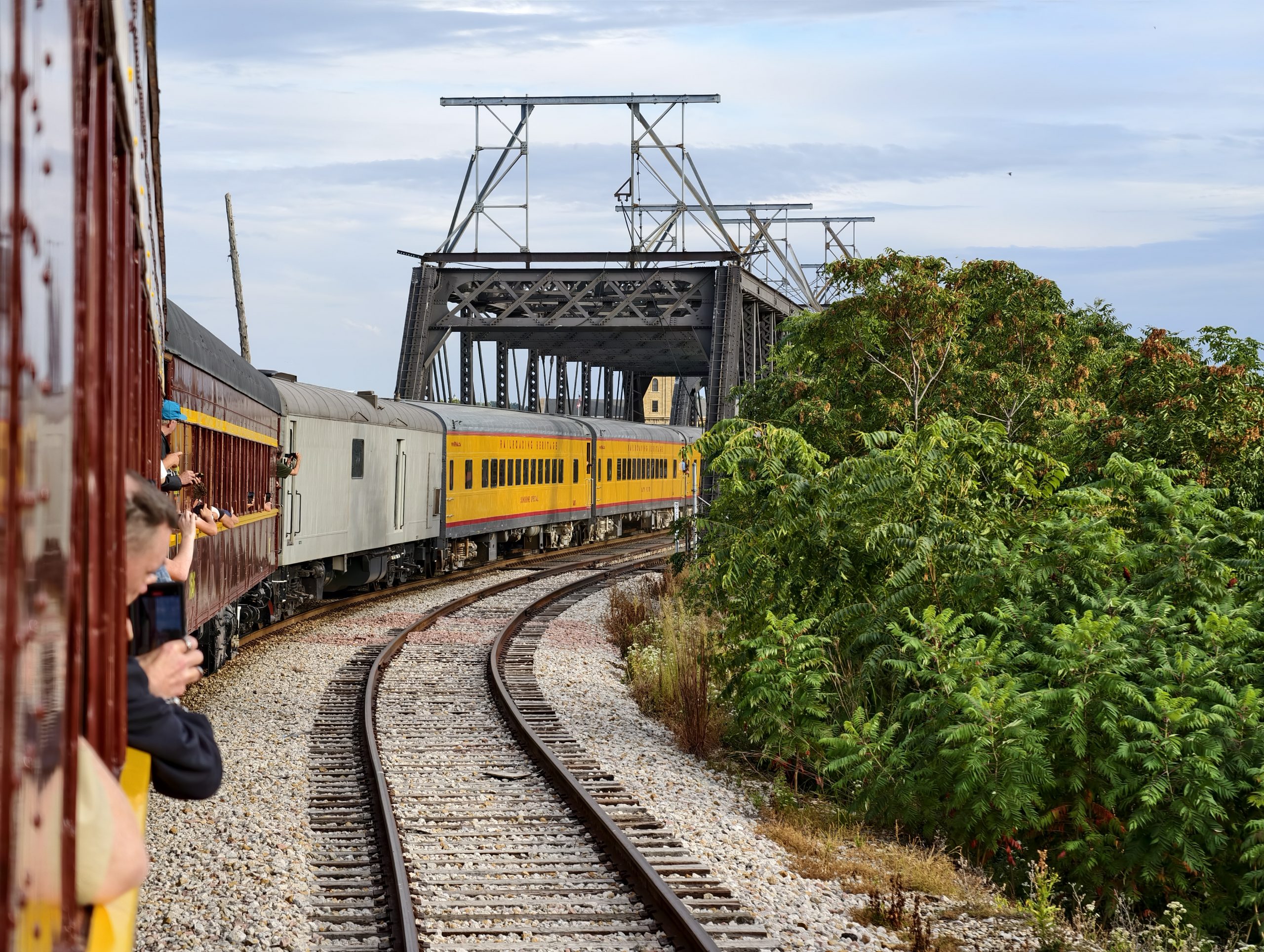
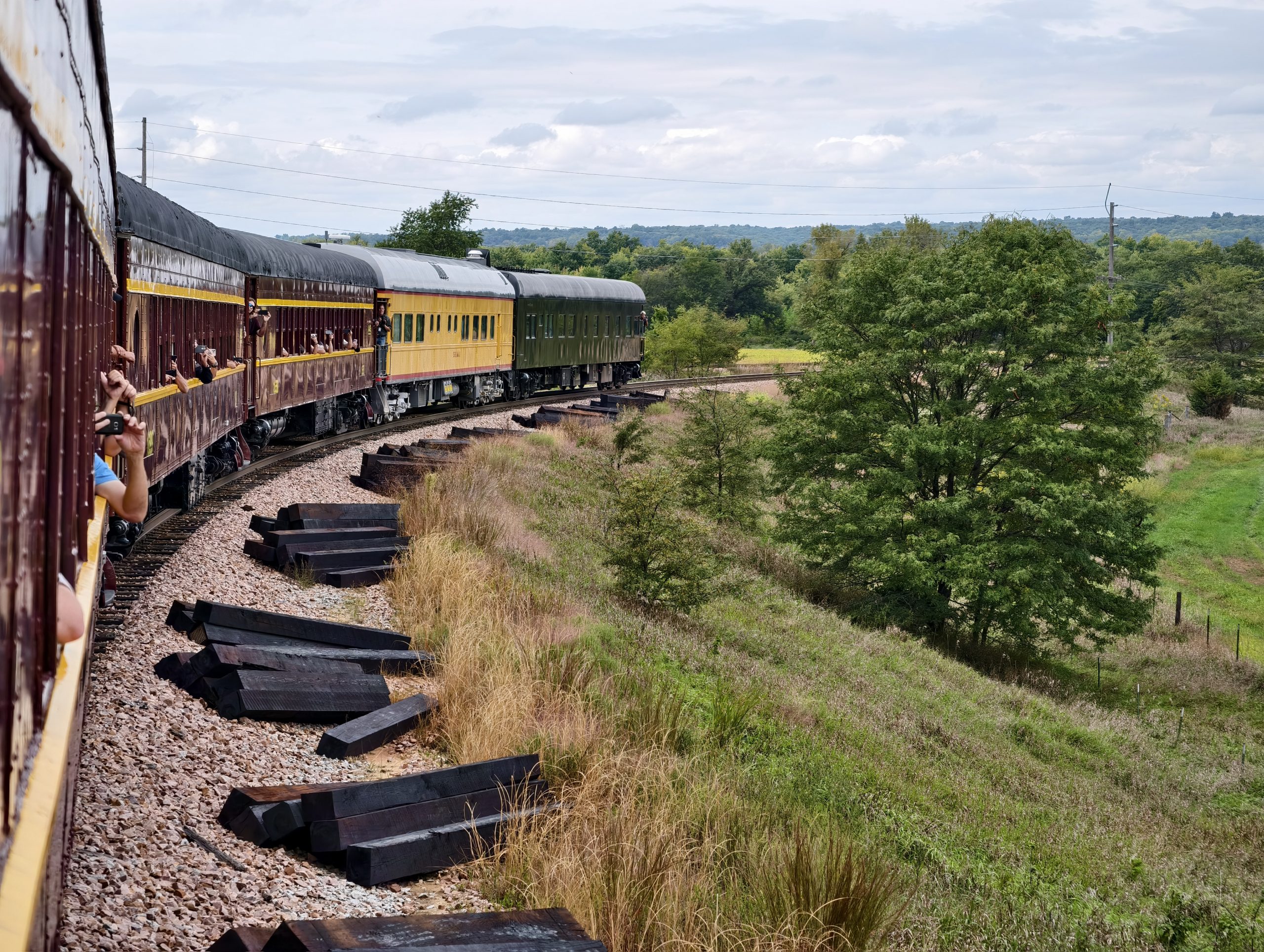
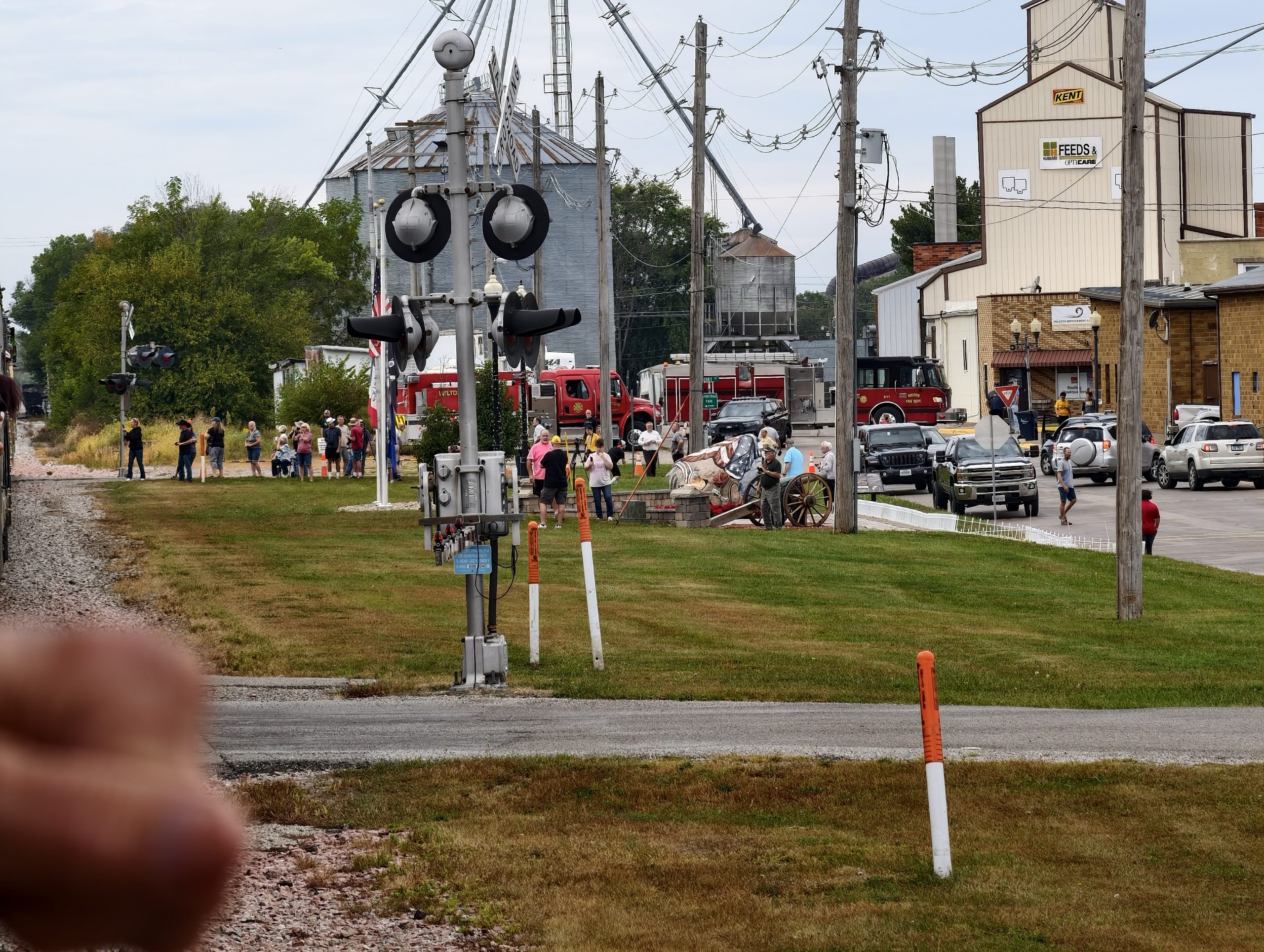
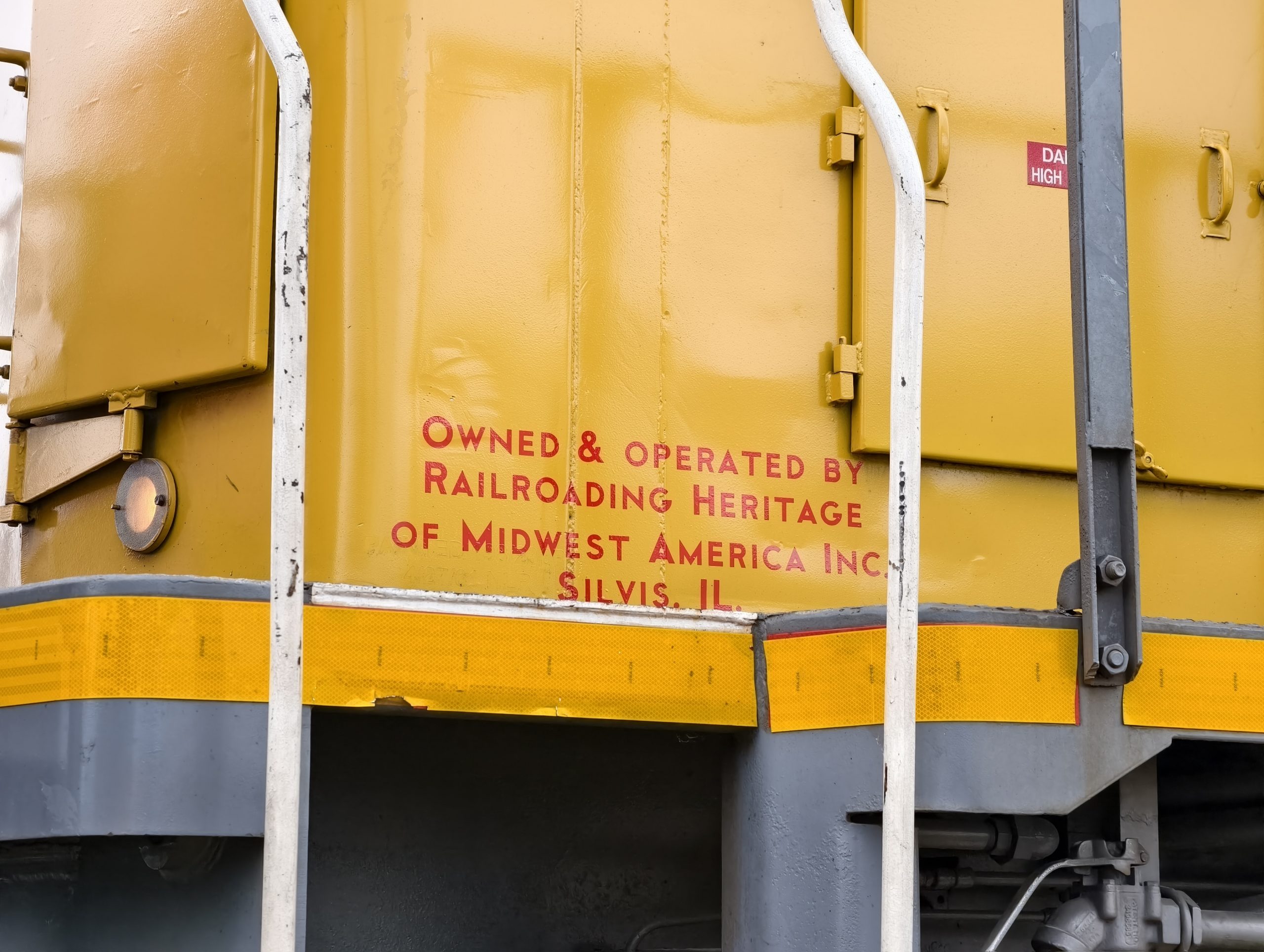
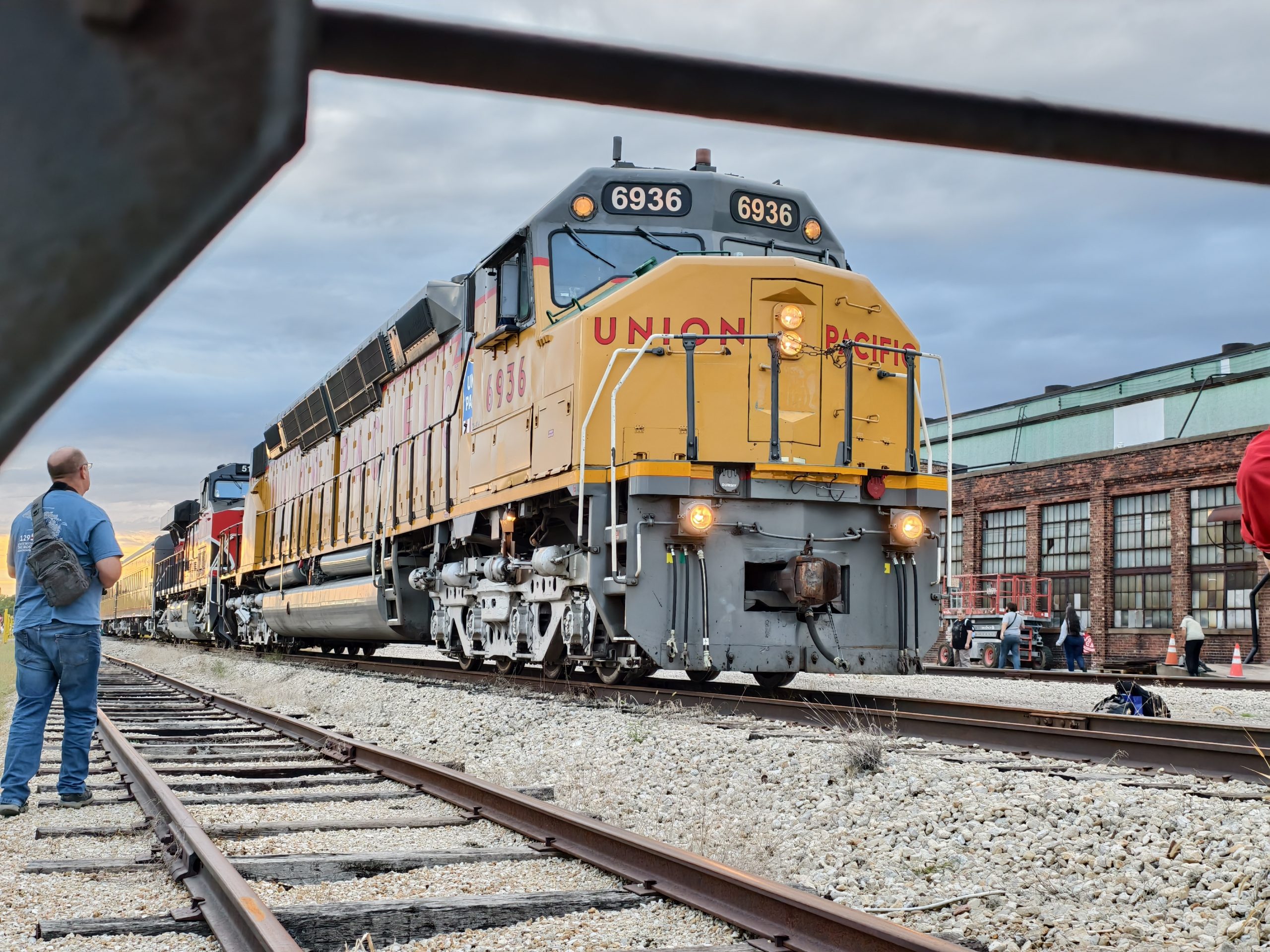
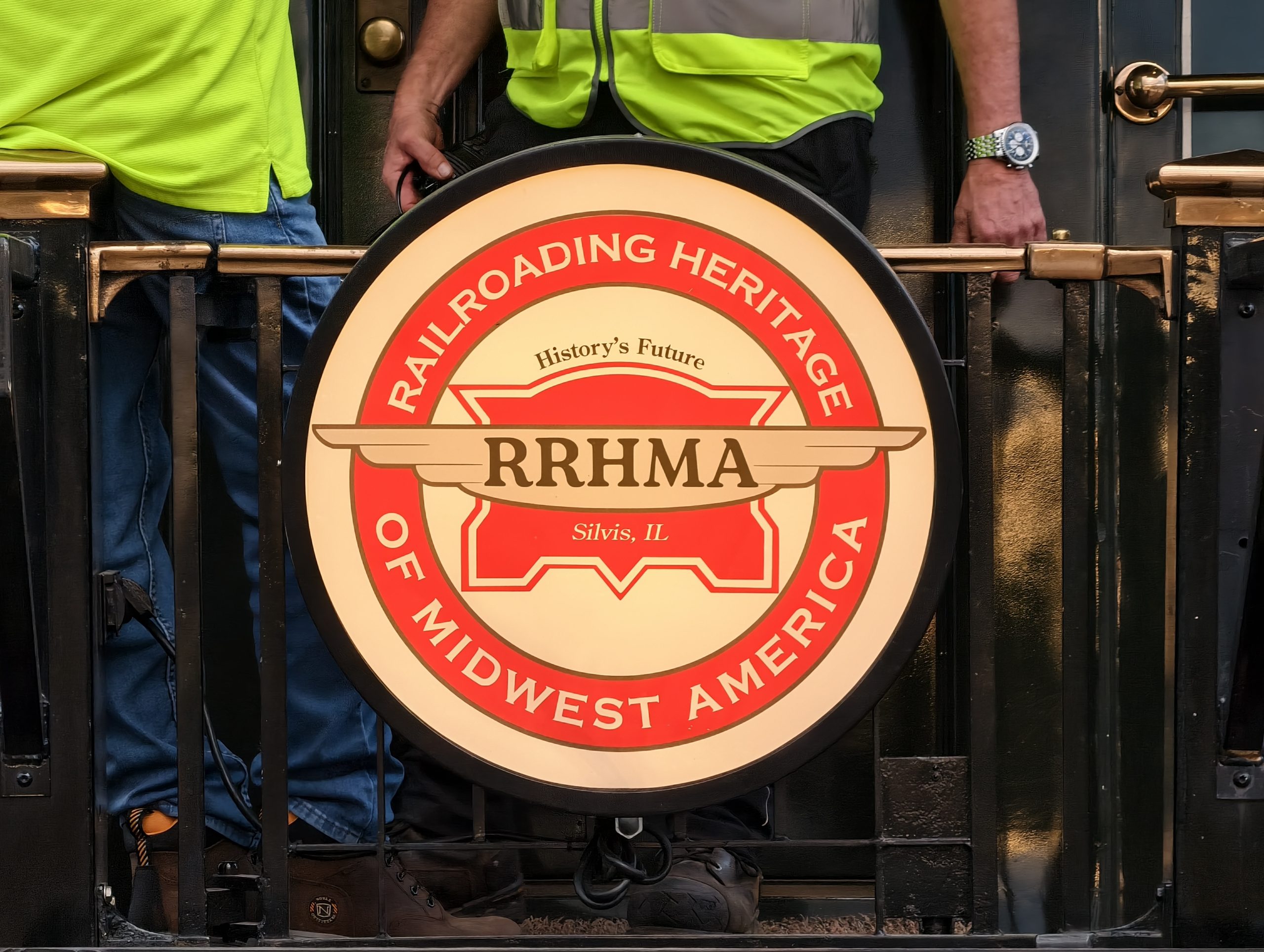
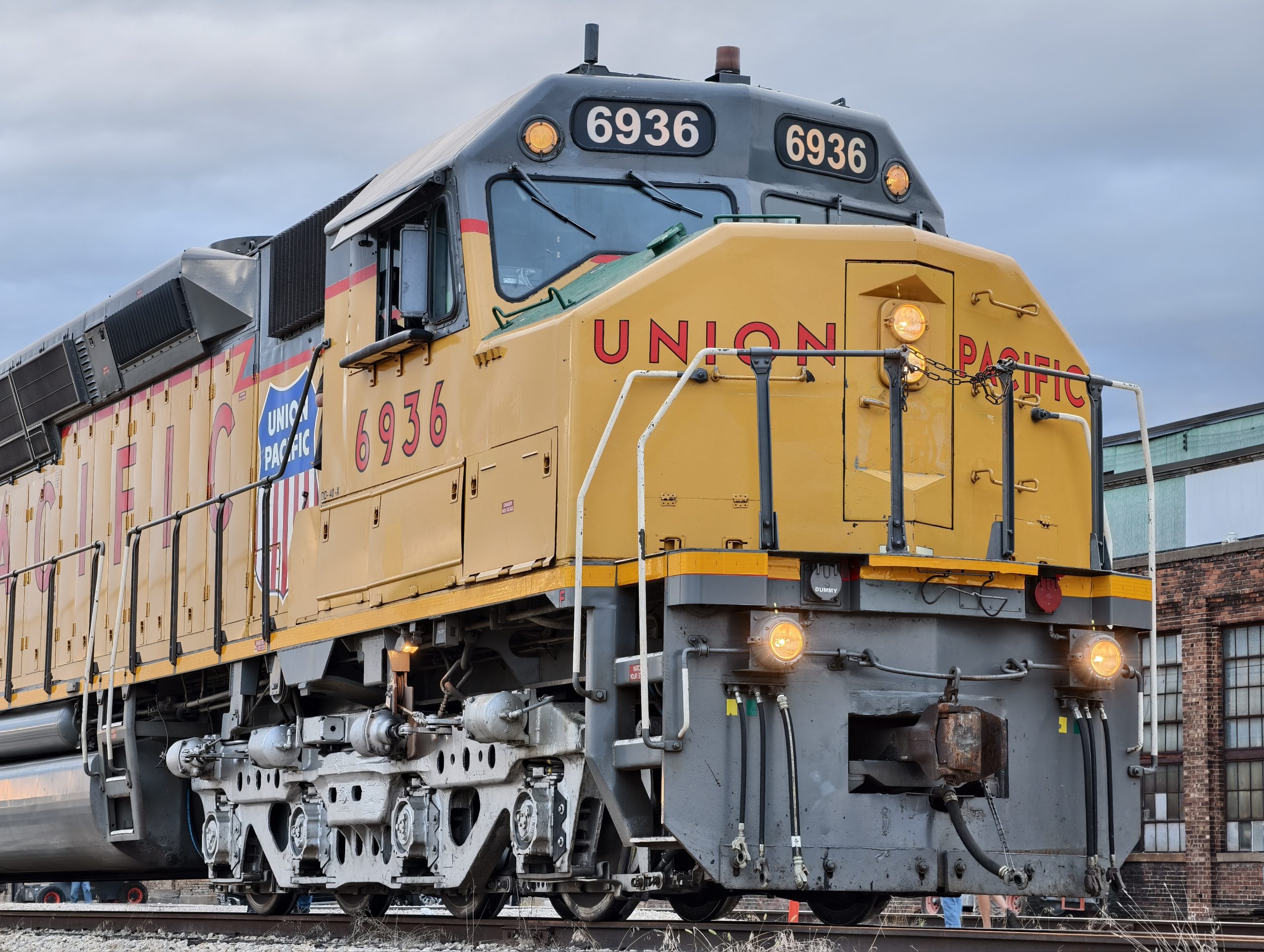
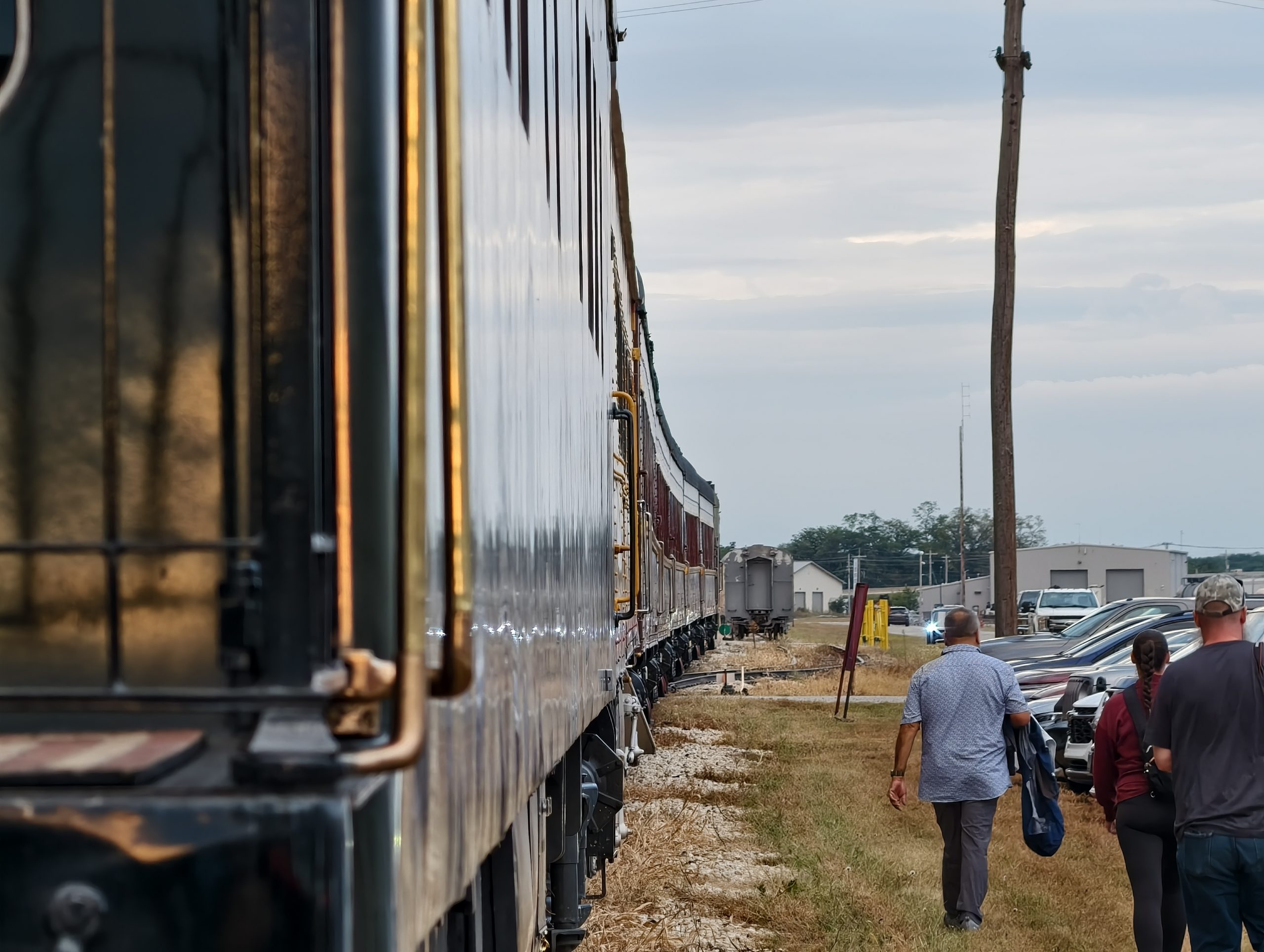
Top graphic image: Mercedes Streeter

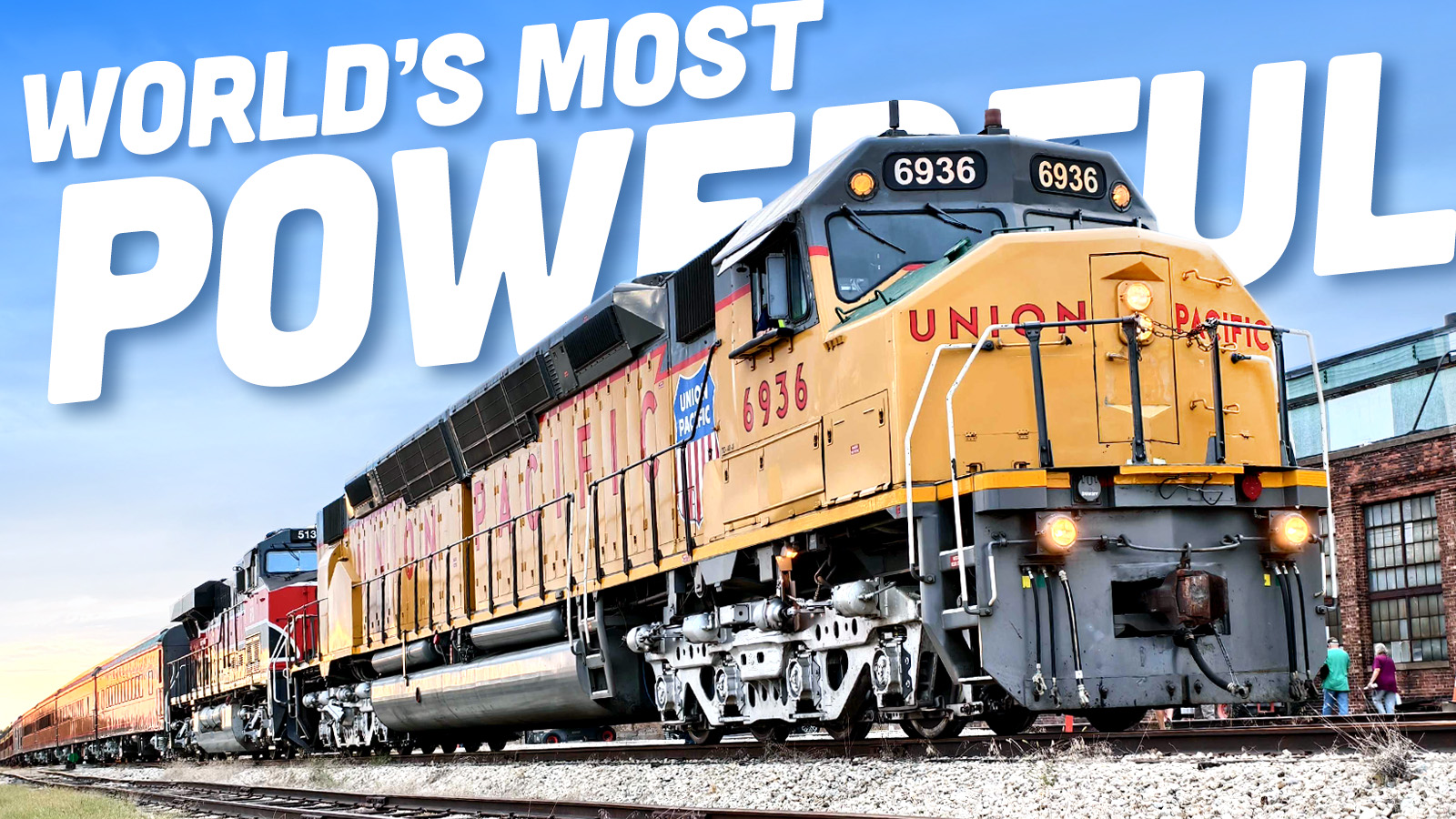






No ICE pictures? More technical specs on the ICEs?
Not a railfan but you make this sound so fun and cozy. And all for about the price of a concert ticket!
IRM is _apparently_ looking to restore their DD40 as well. It’d be cool to see a DDDD80AAXX lashup with both of them someday.
Very cool.
Is ‘railfan’ the PC replacement for ‘foamer?’
Apparently foamers are the railfans that take it too far.
“Railfan” is a far, far older term. “Foamer” probably popped up in the 90s, and got popular in the 2000s or so, to my recollection. It was initially applied to newer railfans with poor self-control who just didn’t respect safety and railway right-of-way boundaries.
Honestly, the “foamer” moniker plus the British term “trainspotter” and its connotations plus the popularized negative perception probably did some real harm to railfanning as a hobby centered on railroading and industrial history. Hopefully that’s changing for the better — we do need people to keep history alive and document and preserve the past. There’s a lot of history wrapped up in railroading.
We used to manufacture the Roots blowers, turbos and water pumps for EMD at Allison and even those part gave you some idea of the size of those engines.
Mercedes, if you’re ever in the QC again, go check out a River Bandits game.
Sounds like a wonderful day trip! Thanks for the write-up.
We’ve done train excursions in Duluth, MN, Spooner, WI, Laona, WI, Green Bay, WI, Soo Junction, MI (unfortunately, now closed), North Freedom, WI, Clarkdale, AZ, and the Grand Canyon railway, too.
We try to take either a boat ride or a train ride every year if we can.
Thanks for showing us another option!
Looks like a blast!
We just hit up IRM this past weekend for their exhibition show. It was my first time, but well timed as my brother, a real foamer, was in town. We rode in a Pullman car, a street trolley, and watched trains come in and out for quite a while.
My photos from the weekend:
https://photos.app.goo.gl/GMbYT2TNGteArTdS6
Didn’t take a ton, was having too much fun!
You chose a great time! The Showcase Weekend is one of the coolest events at IRM, where the museum runs some of the equipment that doesn’t get as much runtime as the other equipment does throughout the year.
Sadly, IRM’s flagship steamer, the Frisco 1630, is sidelined for the next couple of years. So, if you’re local enough, definitely keep coming back. 🙂 The Diesel Days event is pretty great, as is the Vintage Transport Extravaganza. I’ll be there next weekend for Bus Day.
I’m local enough (Grayslake) but planning on moving in the spring so I’ll do my best to hit it up again before we leave!
This looks like a really fun excursion. Union Pacific’s livery is top tier. Maybe that would be a fun idea for an article – a power ranking of the best/most iconic paint schemes of America’s railroad companies.